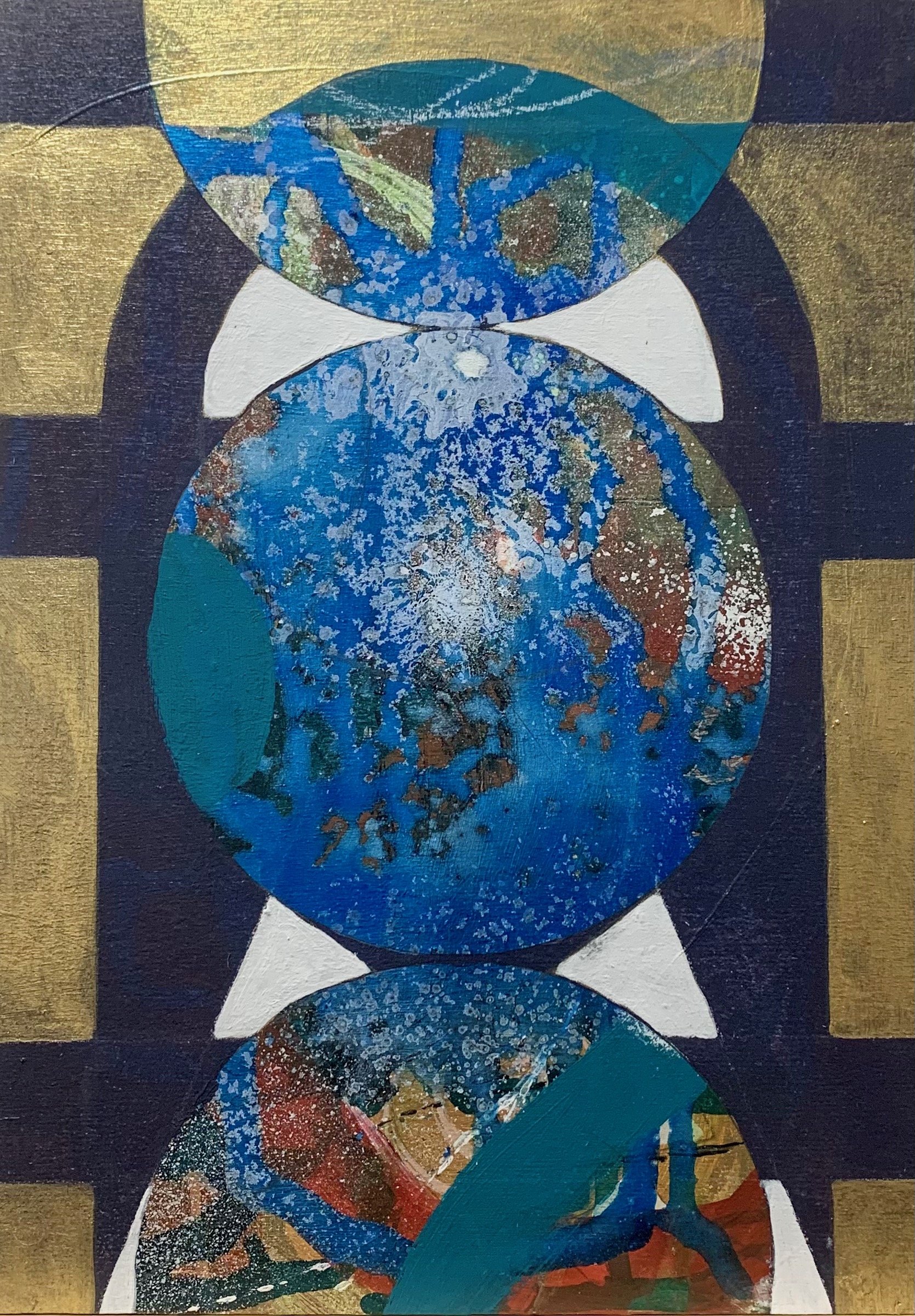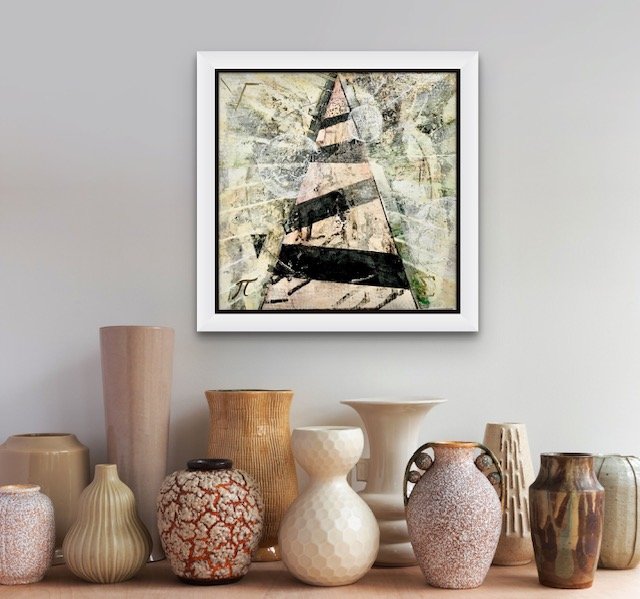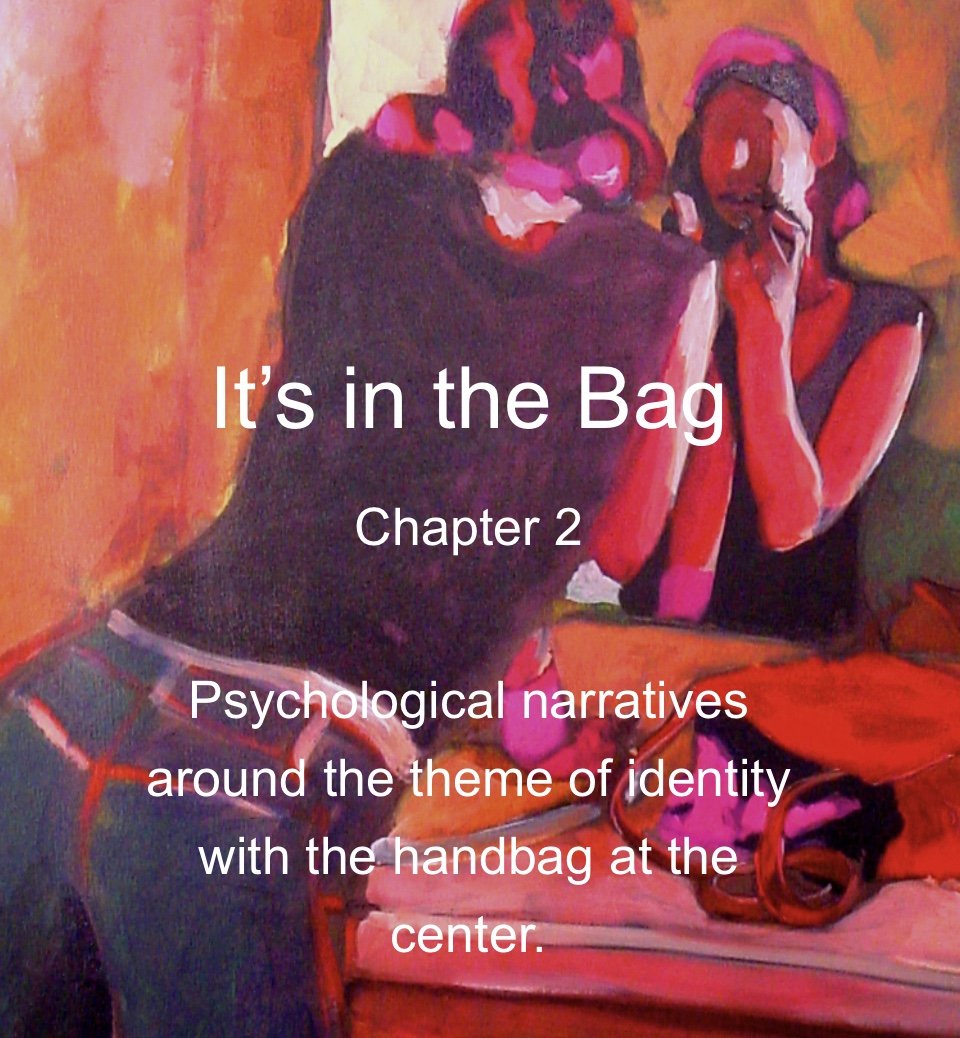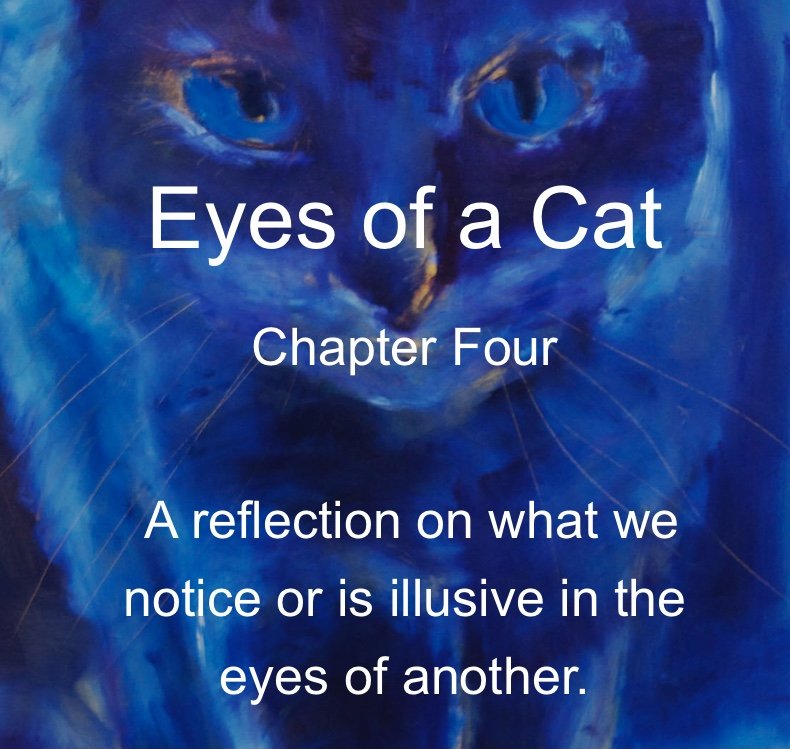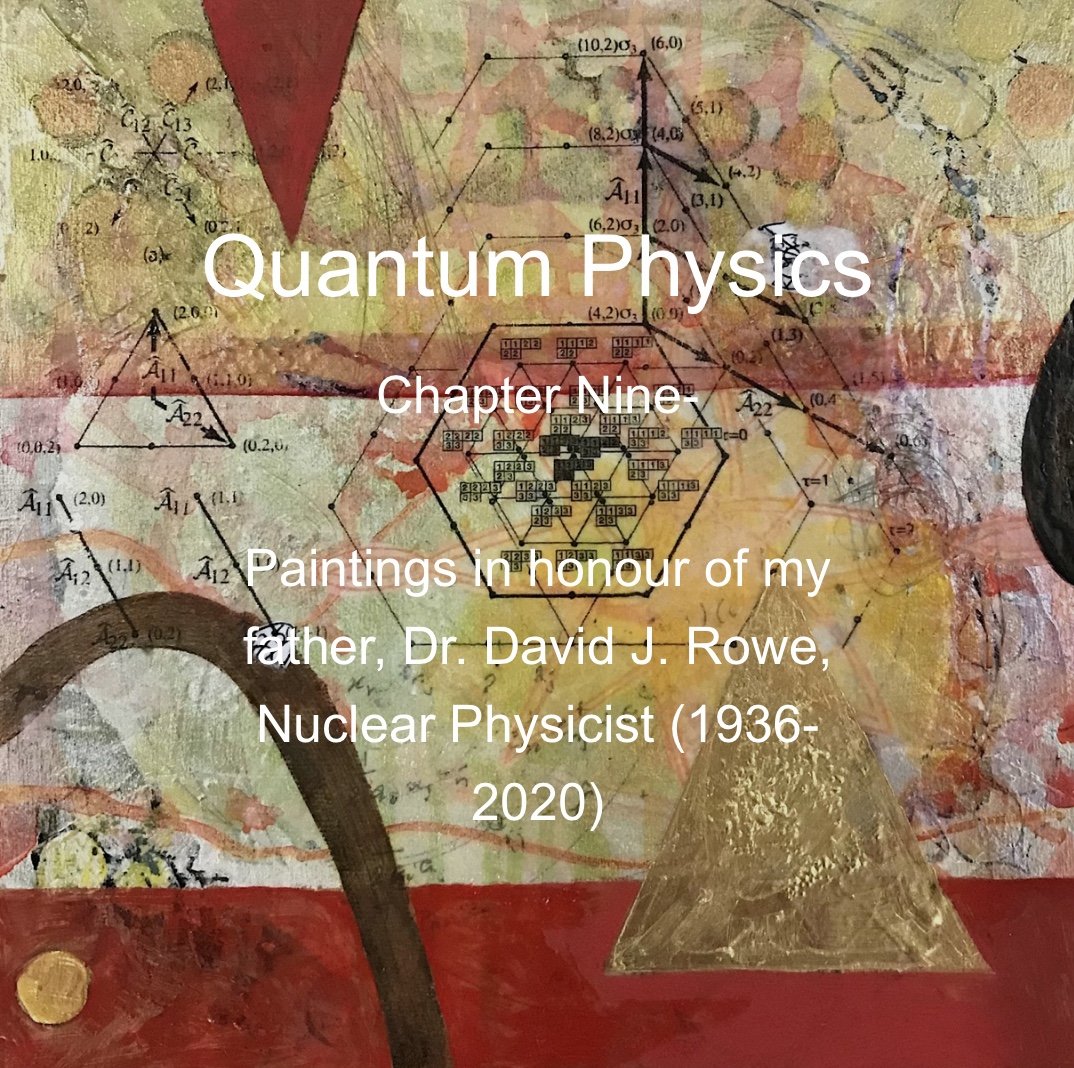Quantum Physics
A body of work in honour of my dear and brilliant father Dr. David J Rowe (feb 4, 1936 - May 8, 2020)
A video of Quantum Physics with Plaisir D’ Amour (instrumental version). My father played Plaisir D’Amour on the piano throughout his life and it was often what I heard laying in bed falling to sleep as a young girl. This body of work went in three directions. The works in this video are the pieces on wood panel. Many of these pieces contain his actual formulas and rough notes embedded in the paintings.
‘Quantum Physics’ began with sketching small loose mixed media experiments on paper. I attempted to express the symbols and imagery referencing the pursuit of understanding the nature of our existence, the patterns, particles, waves, elements and mathematics amongst the chaos of the unknown, ie, what I imagine might have been the journey of my father throughout his career as a theoretical nuclear physicist. This led to the second direction in which I used the same process but worked in multiple layers adding various mixed media elements (collage, copper, ink, charcoal, metallic paint etc.) on 12” square wood panels. After this, I moved to a scale of 24” (six pieces on paper and one wood panel). The works on paper have a performative quality in which the viewer can see the process of creation. The wood panel pieces have a more layered narrative quality. This body of work is still in progress, new works are on the easels in my studio, some commissions are on the go and preparations are underway for a pop-up show in the evening of Saturday September 17th in Toronto. (click on button below to sign up to learn more). Check out images at the bottom of this page to see the body of work as displayed at a Symposium in my father’s honour on June 4, 2022 at the University of Toronto.
In my father’s unrelenting quest to solve equations, he constantly discovered new problems and directions that lead to various rabbit holes of enquiry. He inspired me to trust to follow multiple paths of investigation in my art and to wait for patterns and solutions to emerge to open the door for the next exploration. I hope you enjoy checking out this current body of work inspired by my father, Dr. David J. Rowe.
Oil Mixed Media Works on Wood Panel (Multi-Layered works often with His formulas embedded)
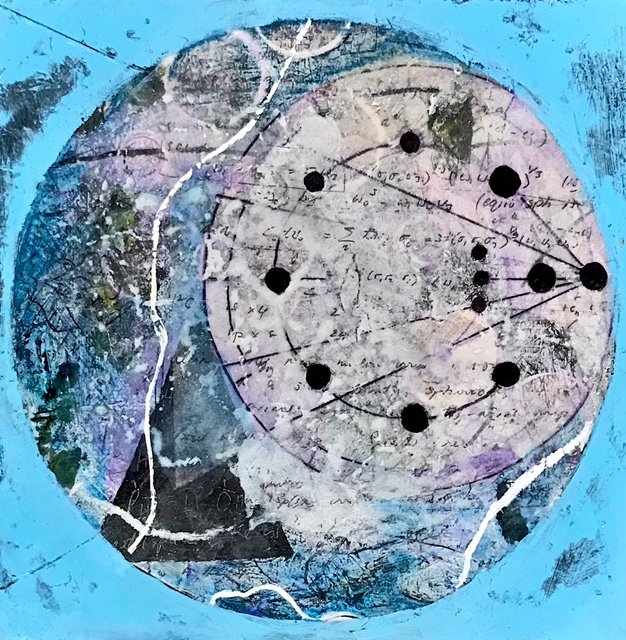
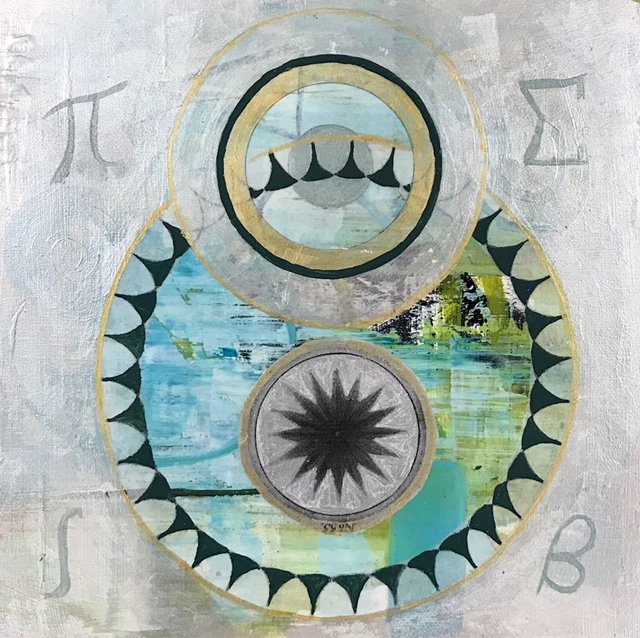
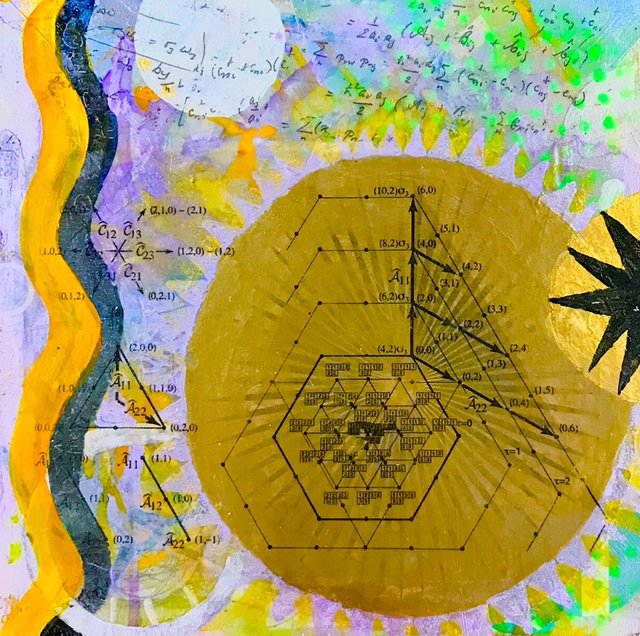

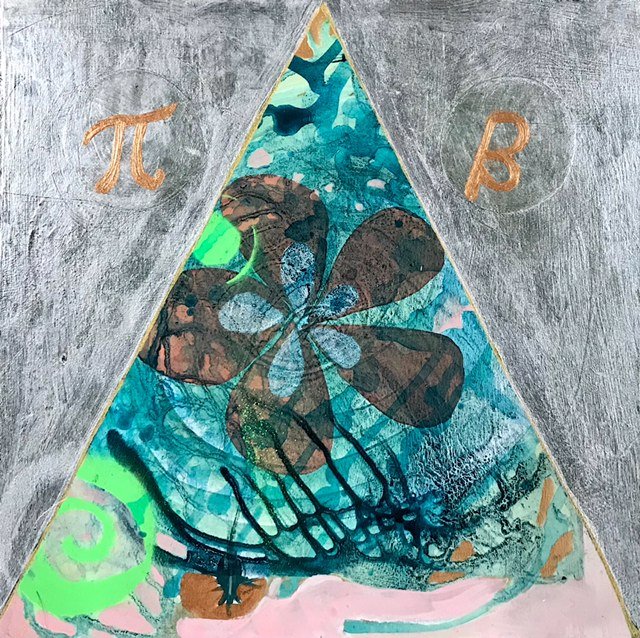


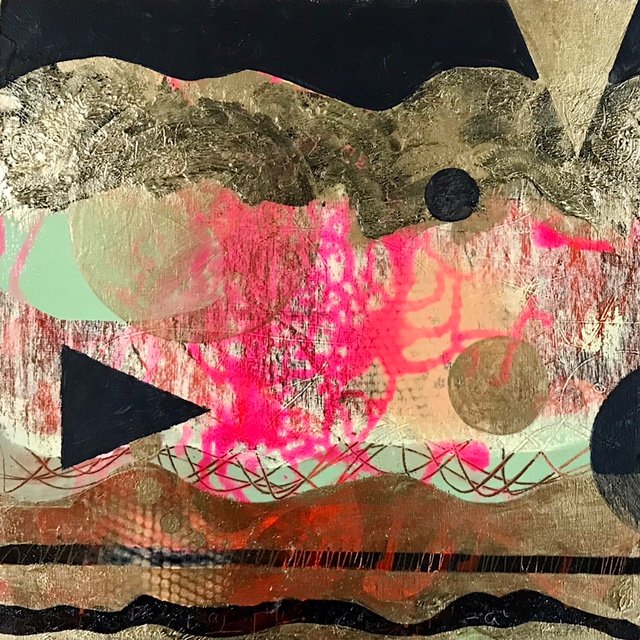

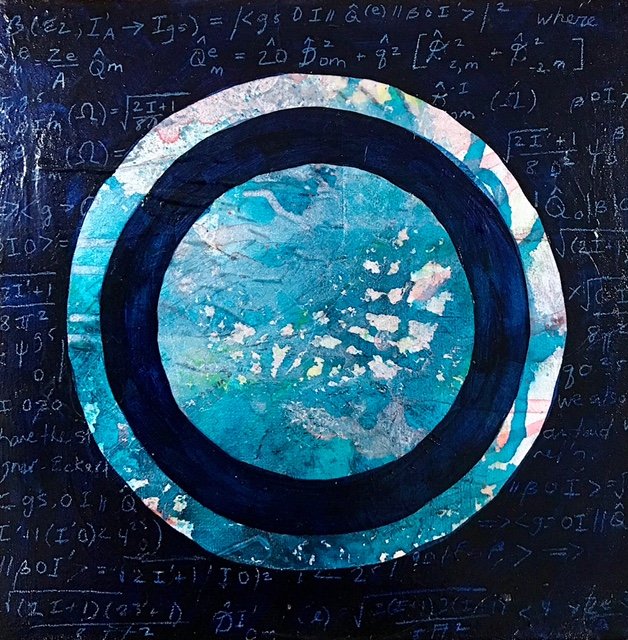
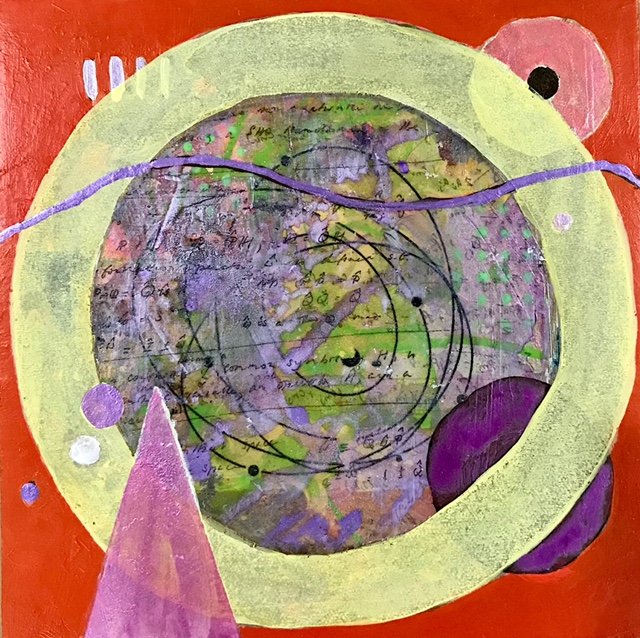



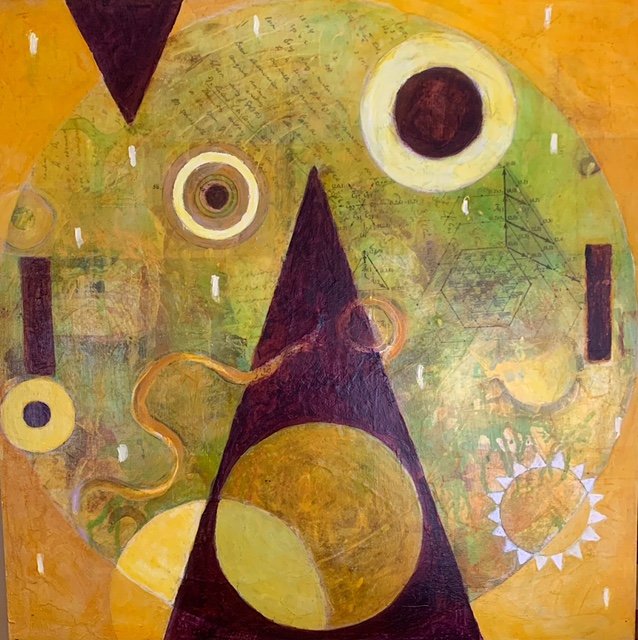
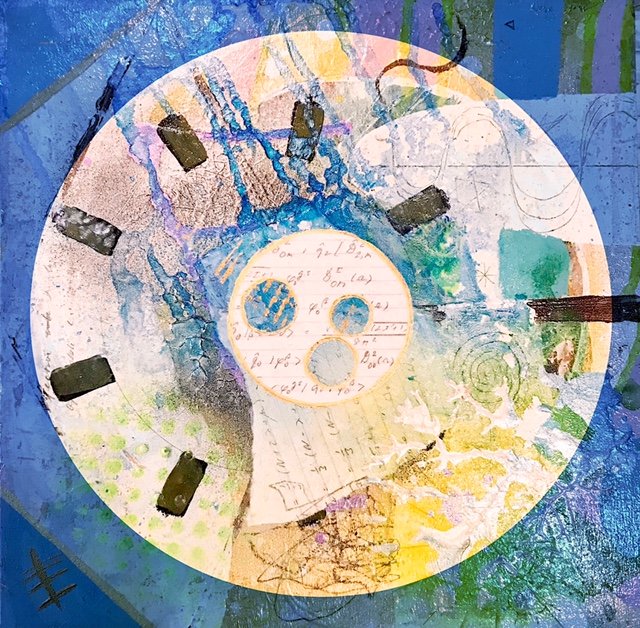
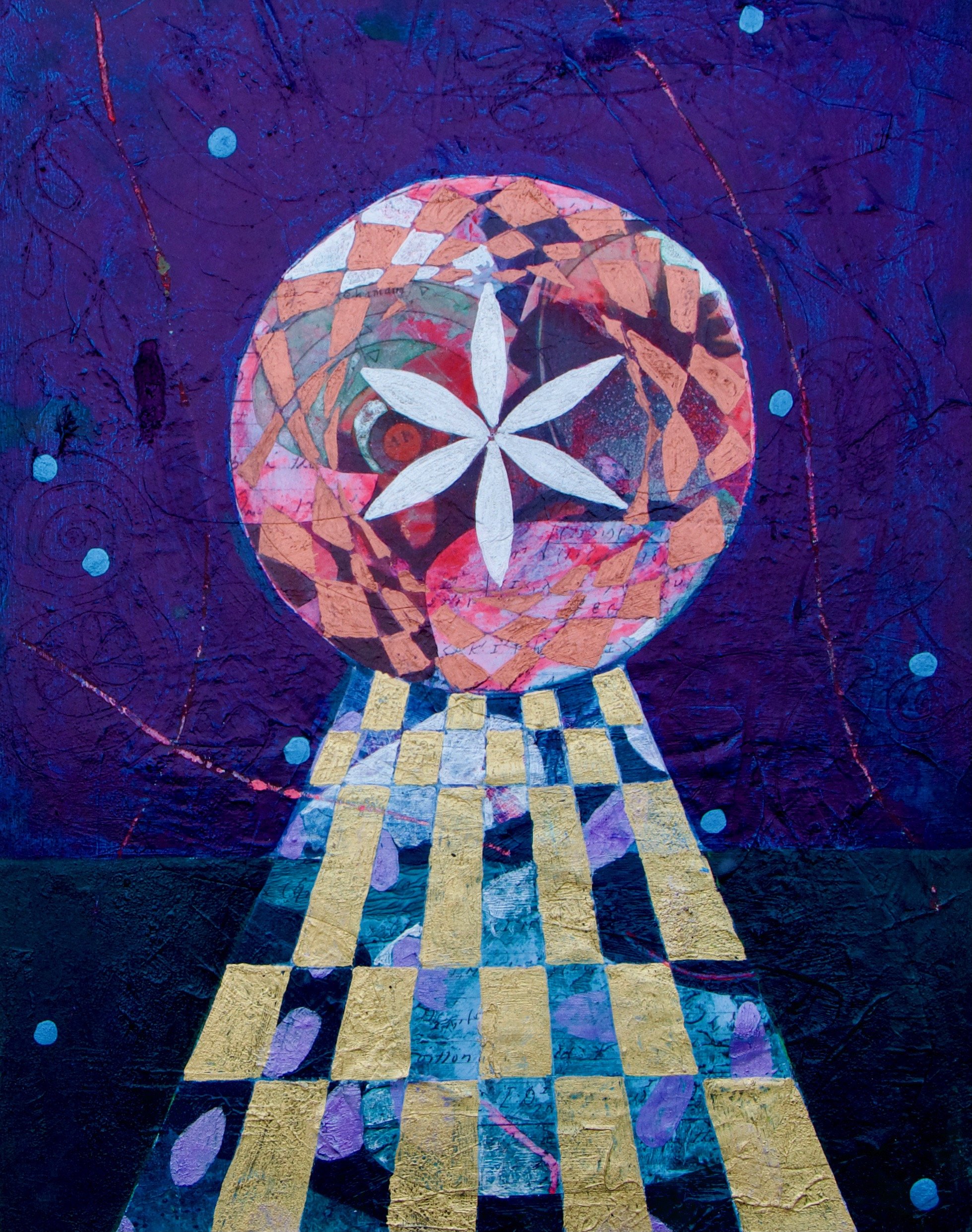
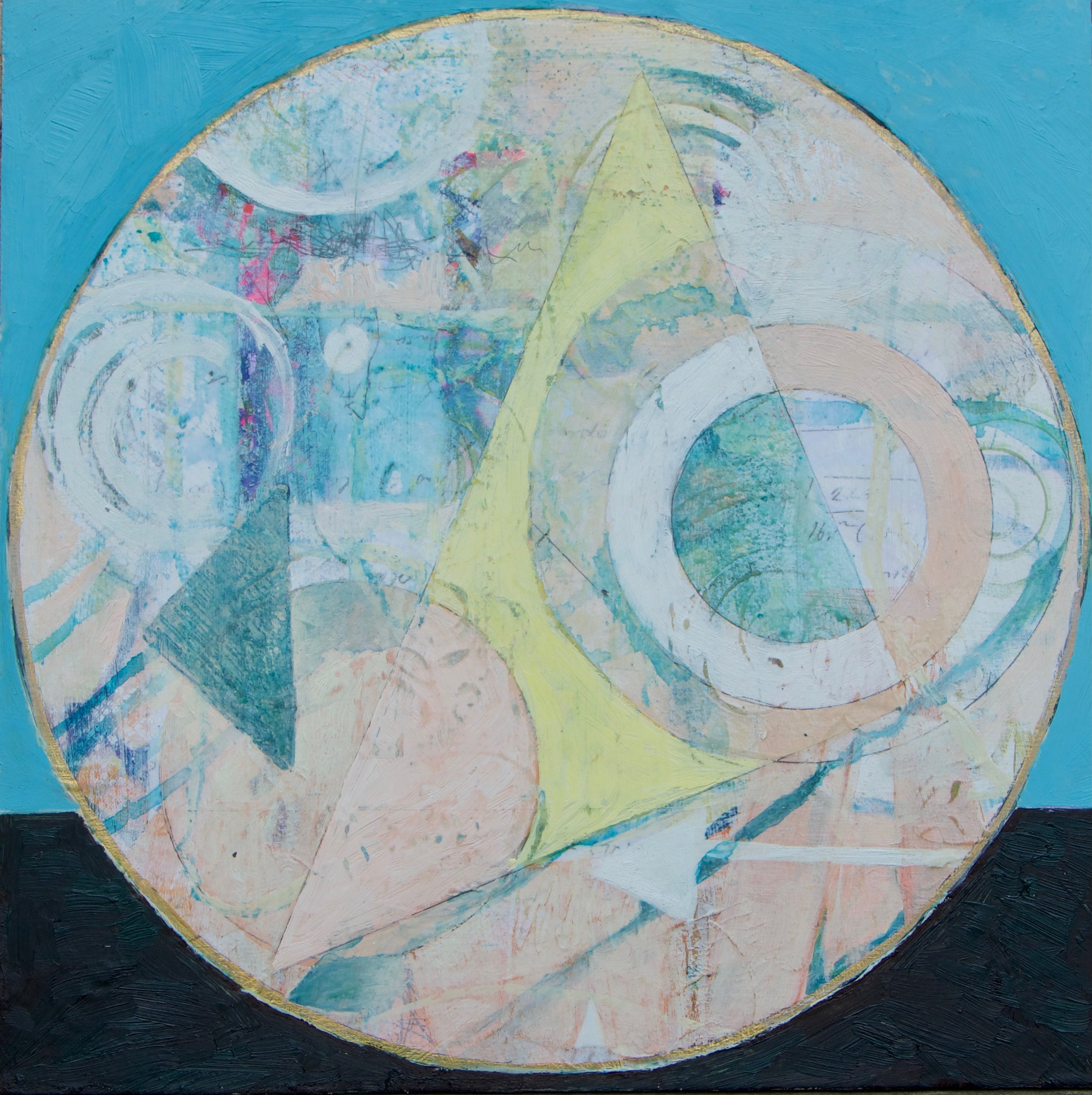
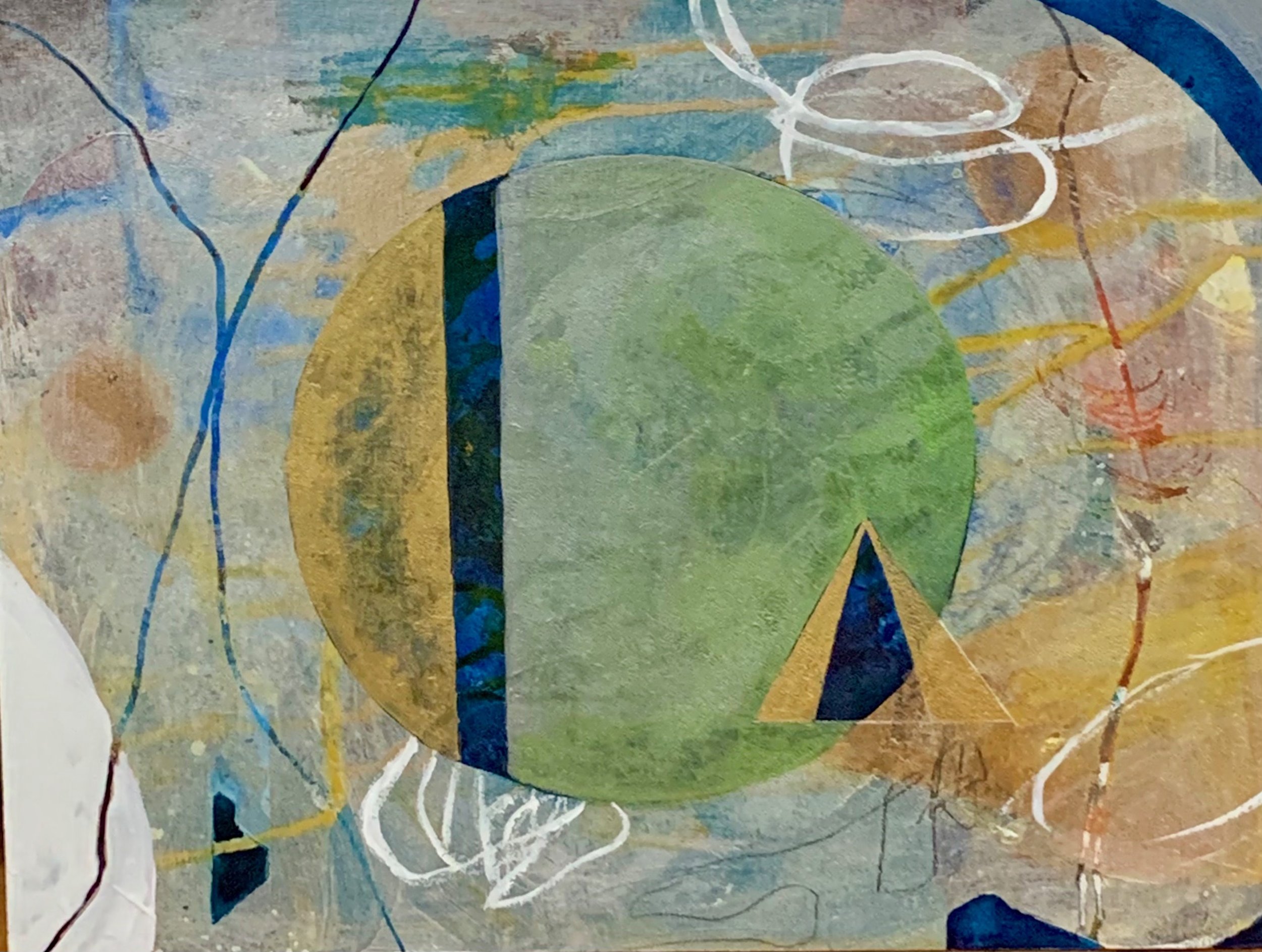
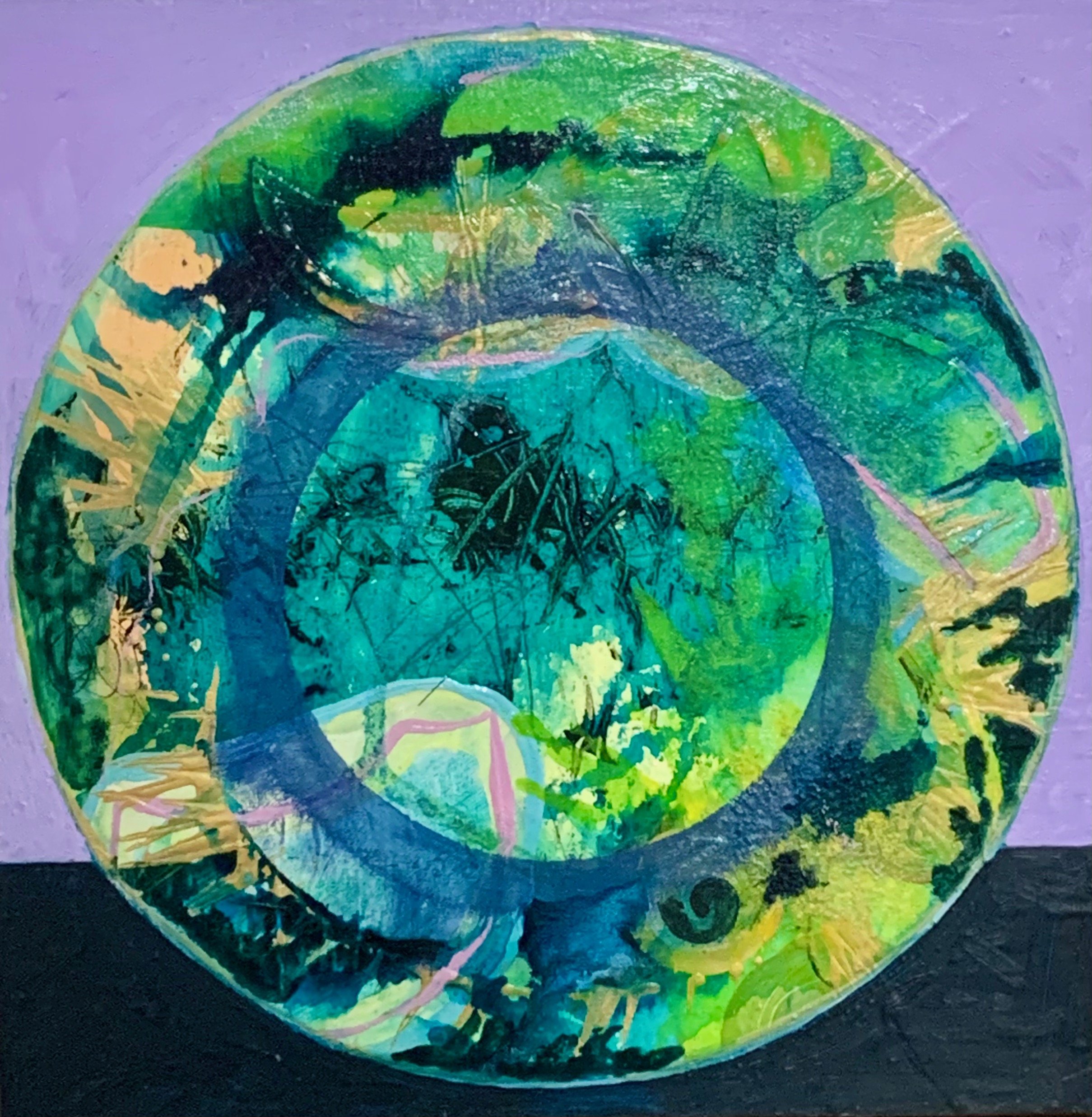
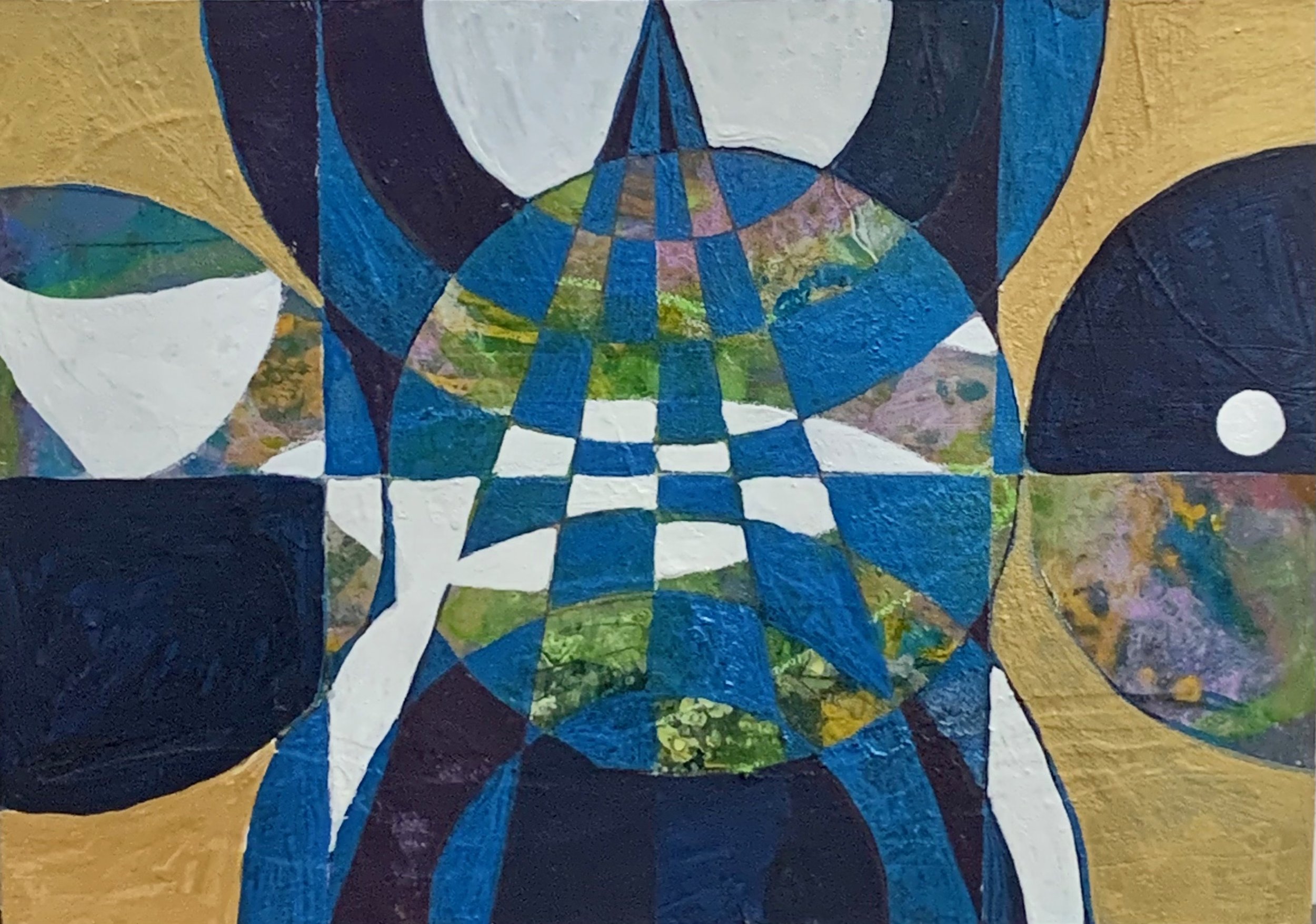

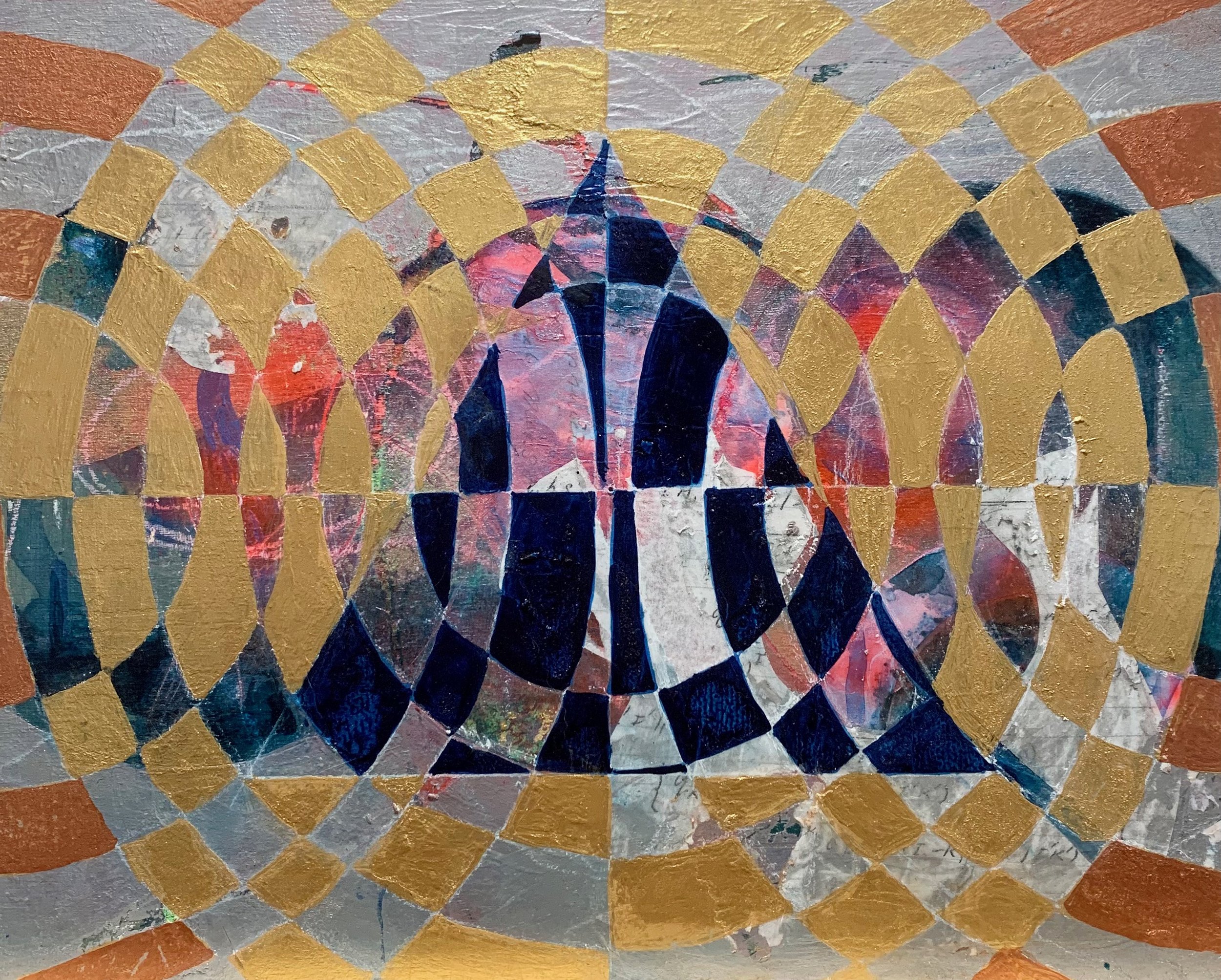
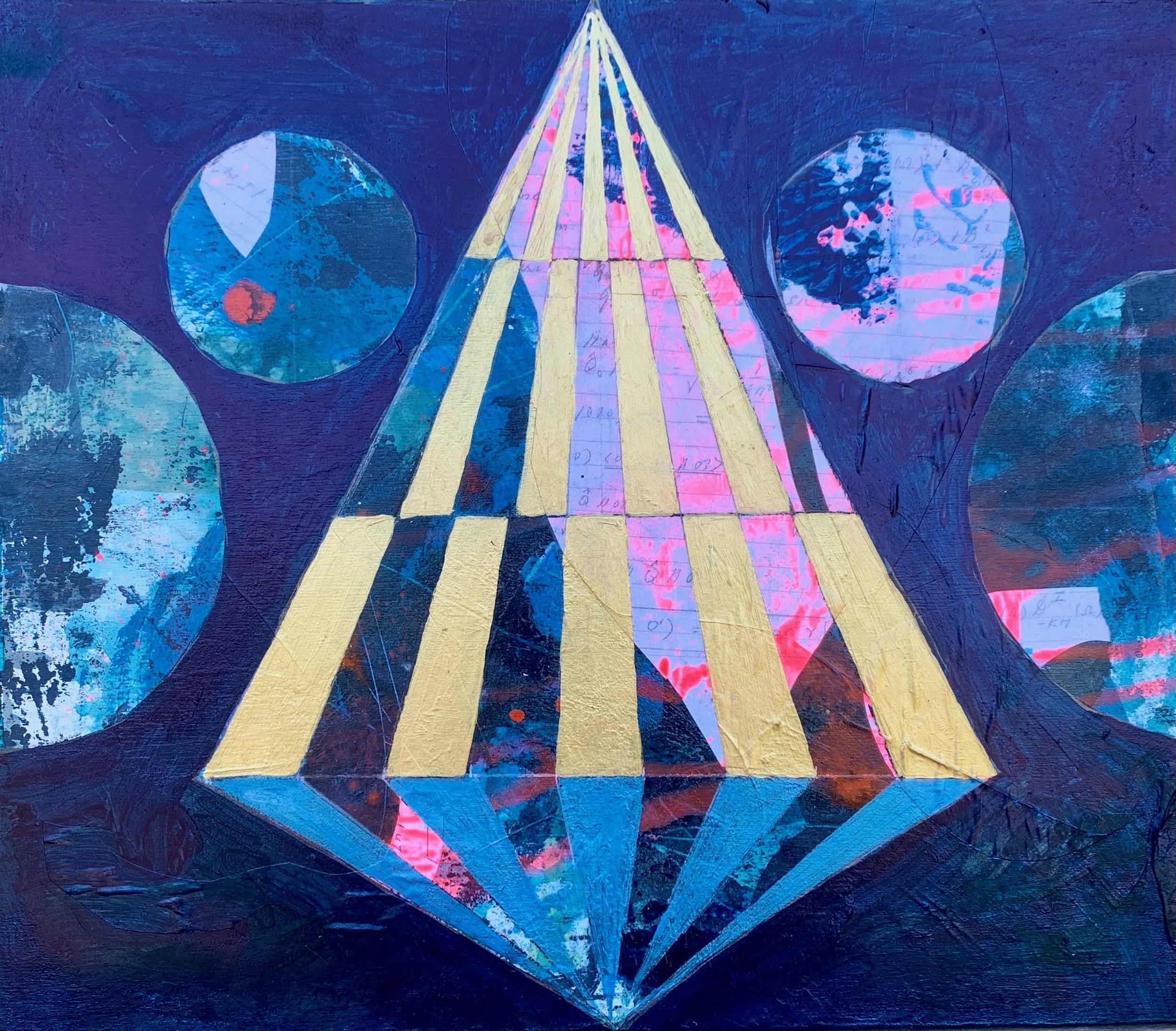

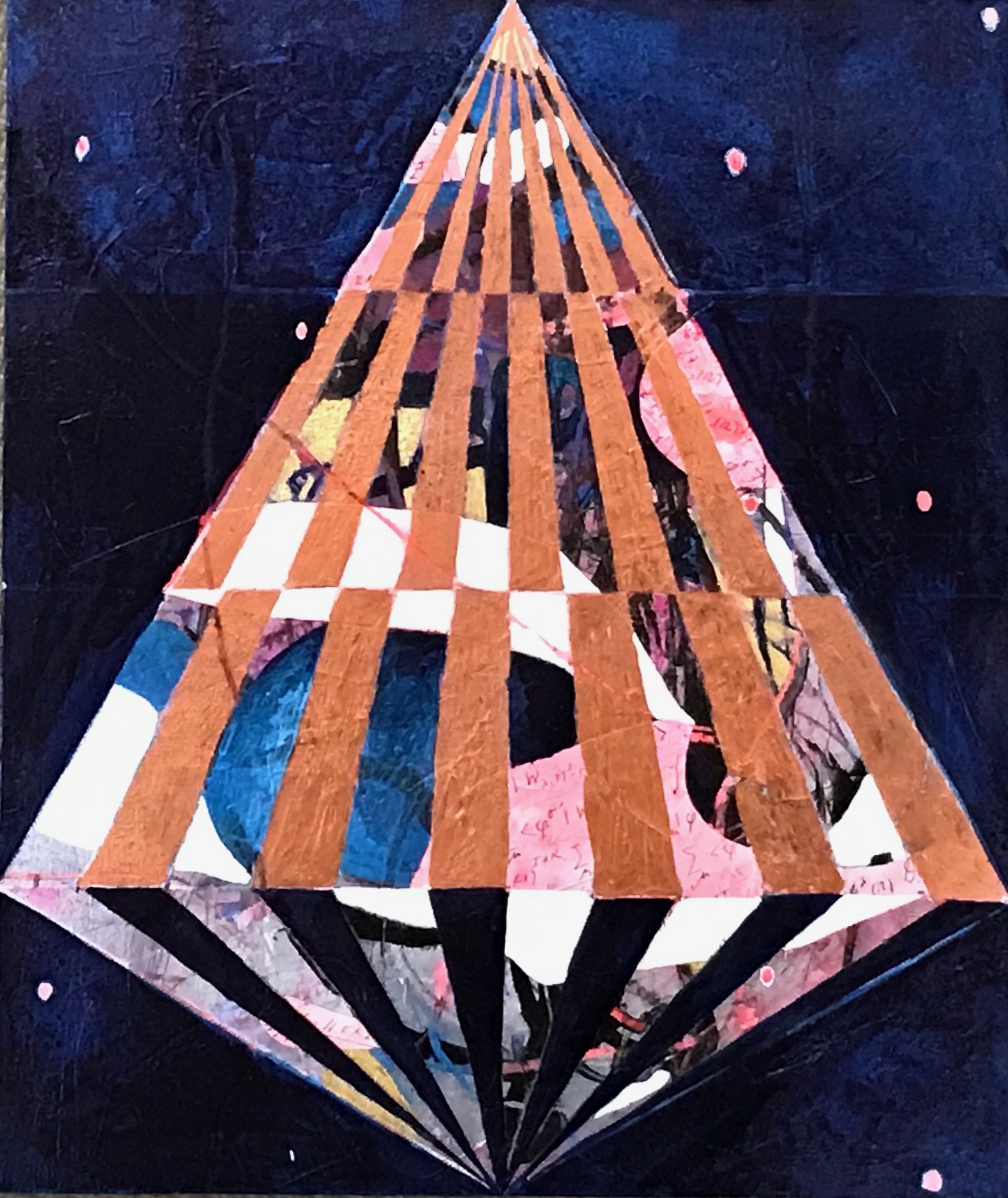
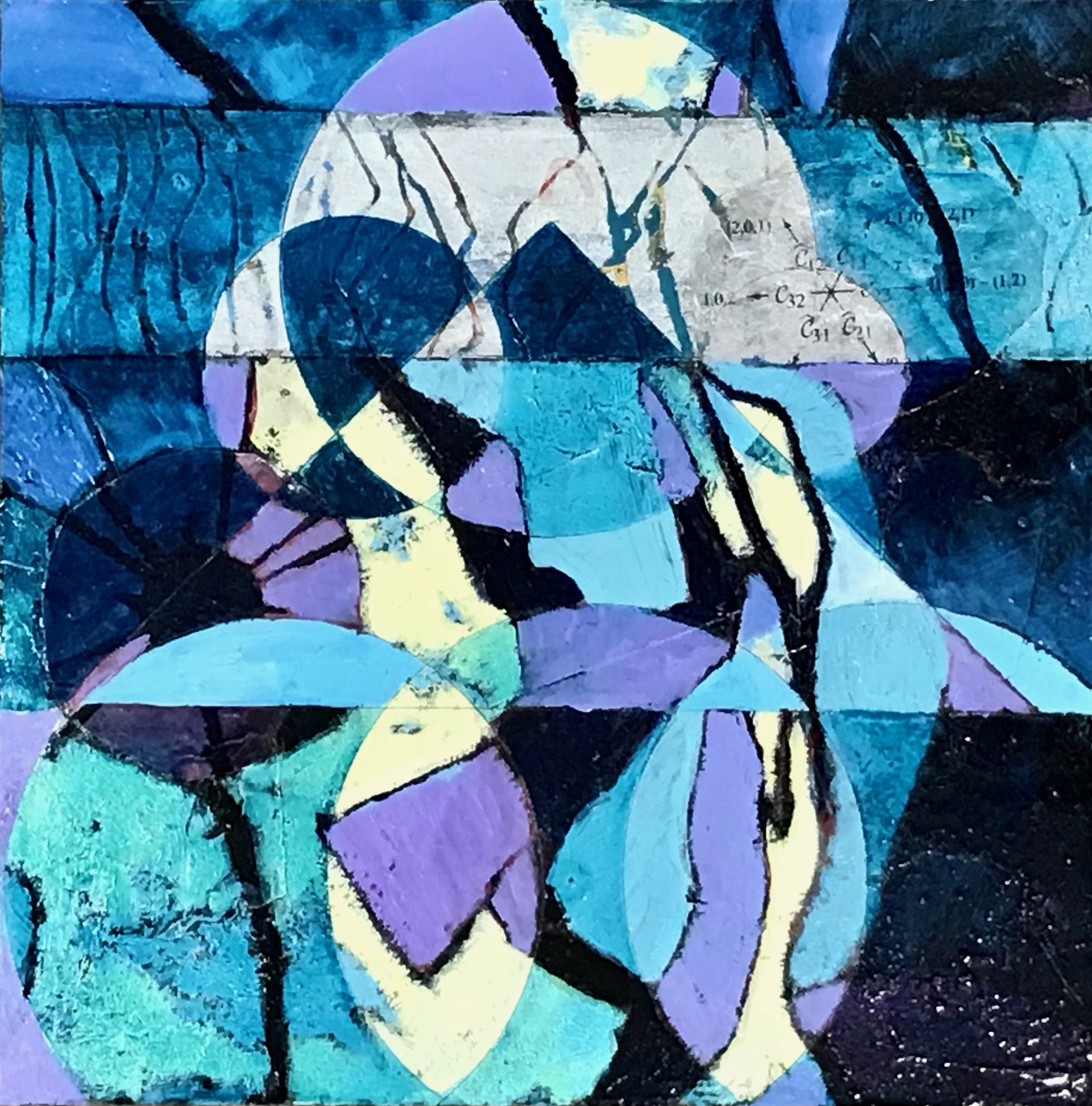
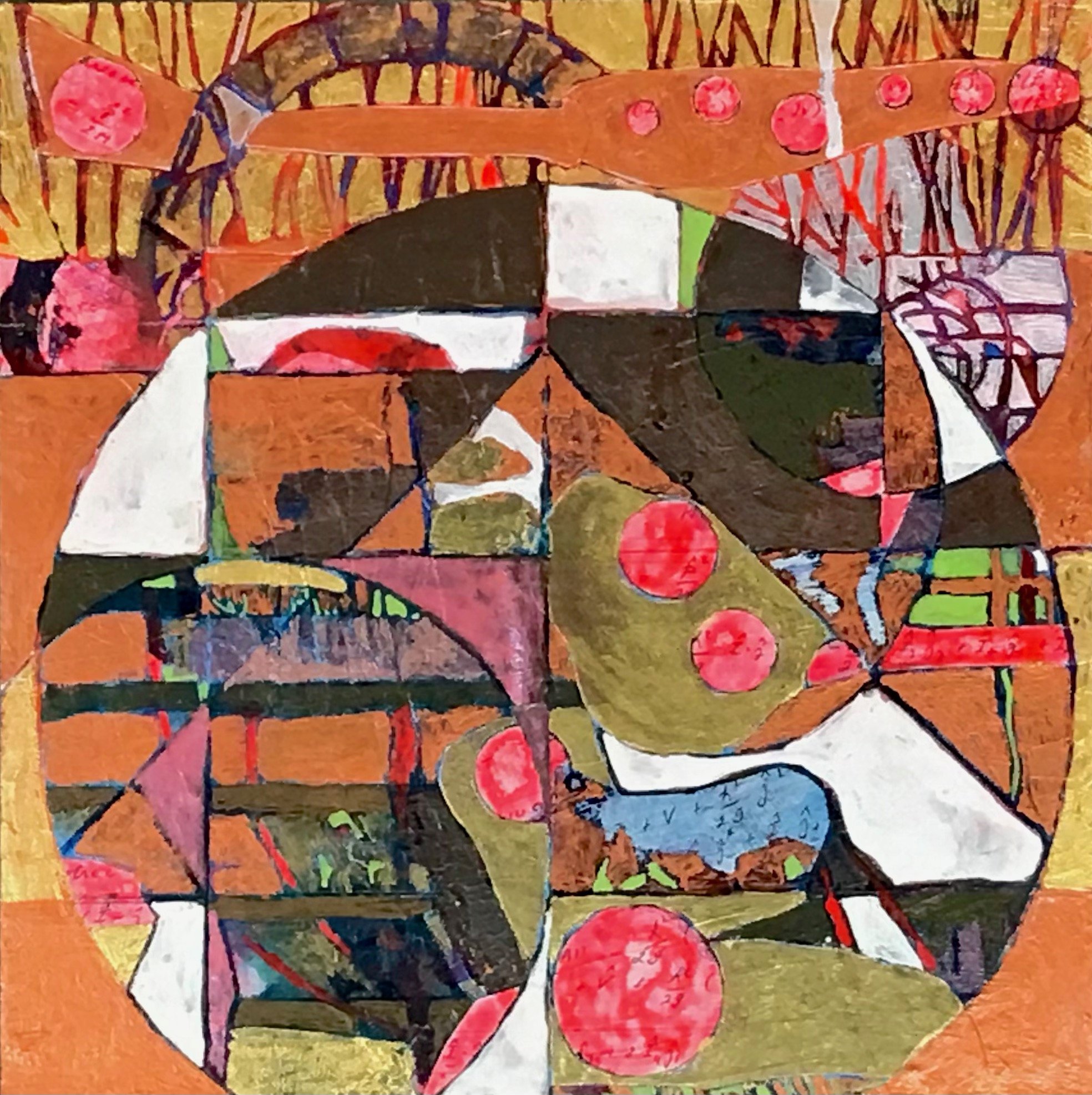
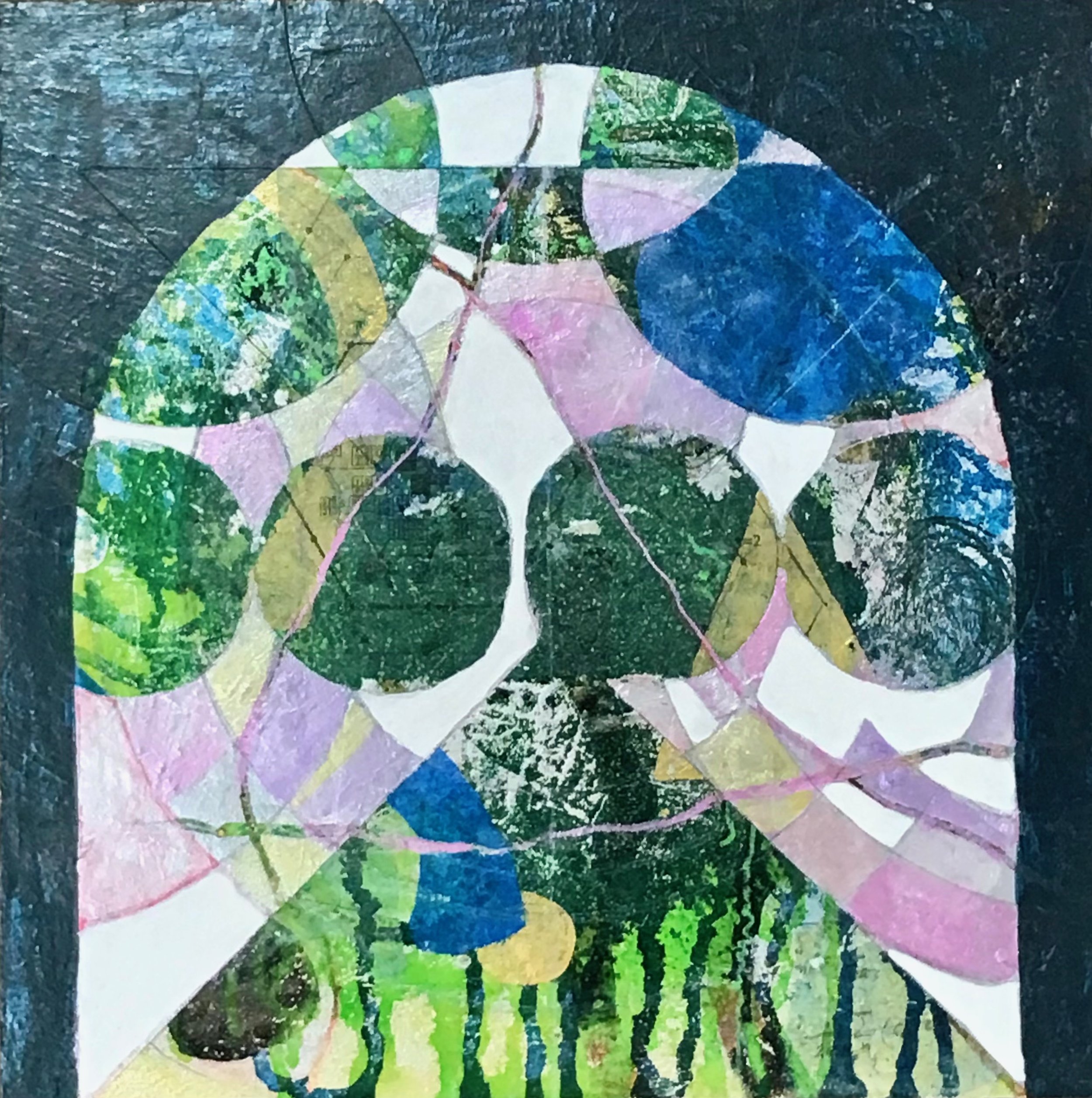

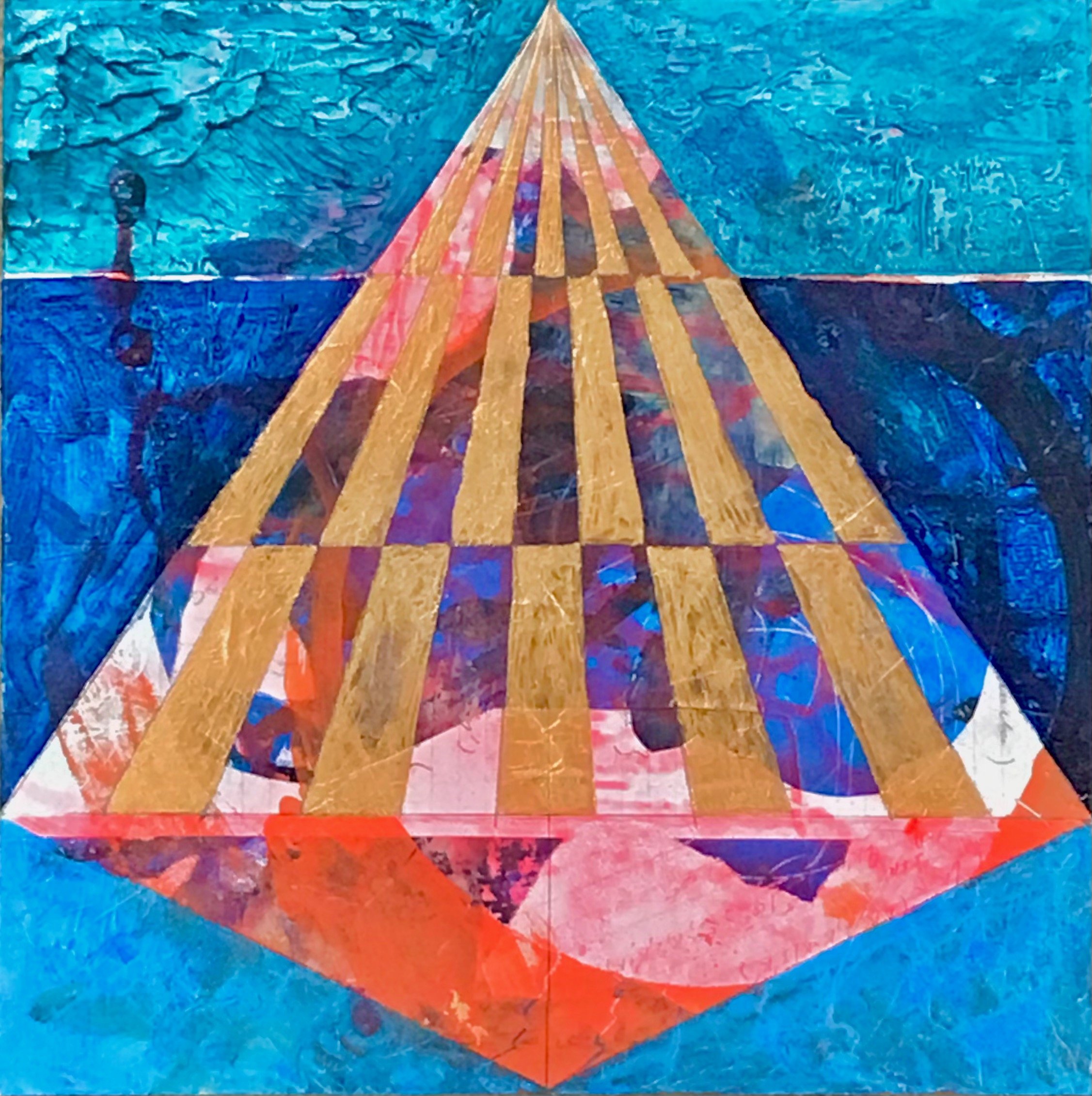
Small Mixed Media works under 7” on paper (performative works)
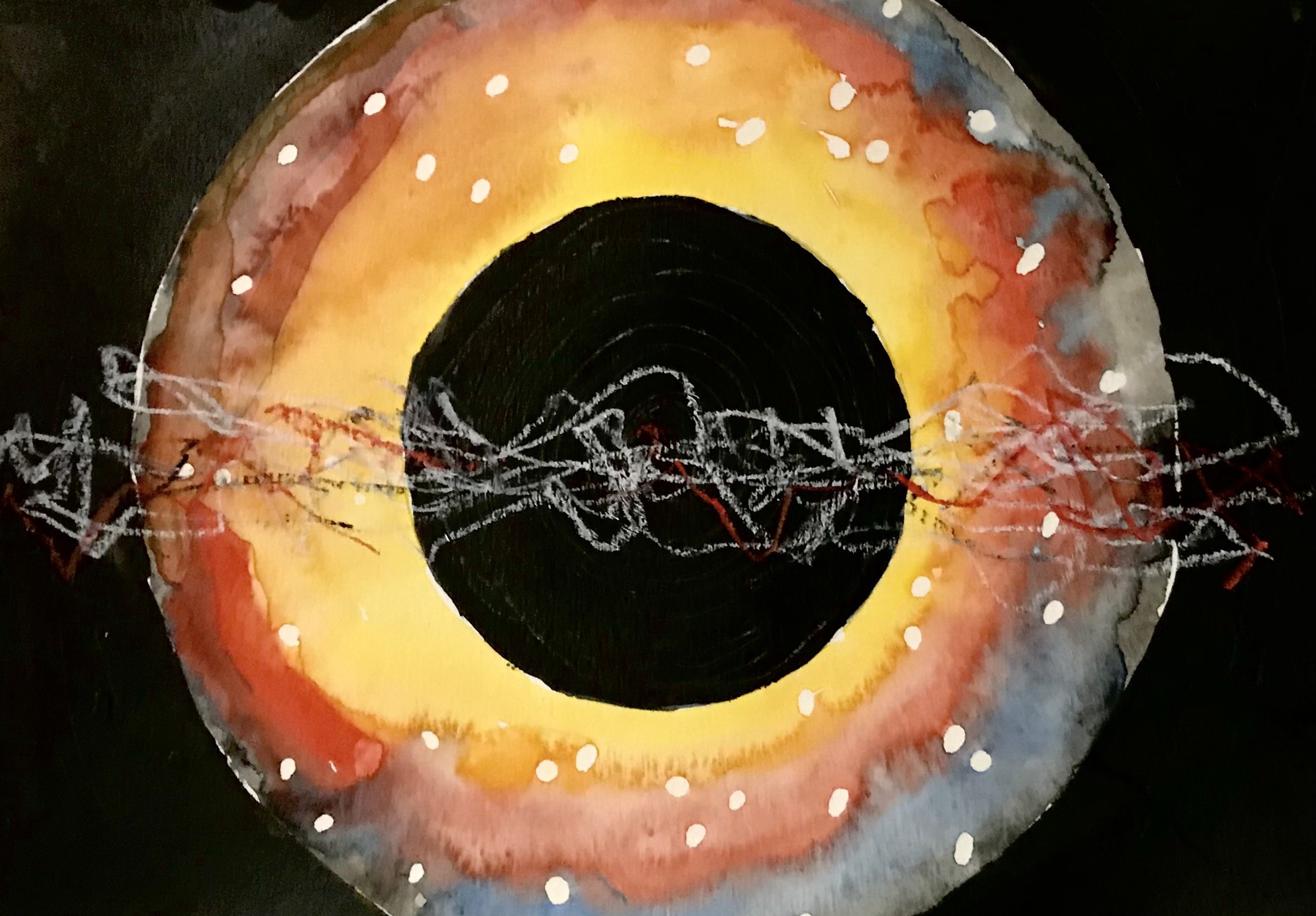

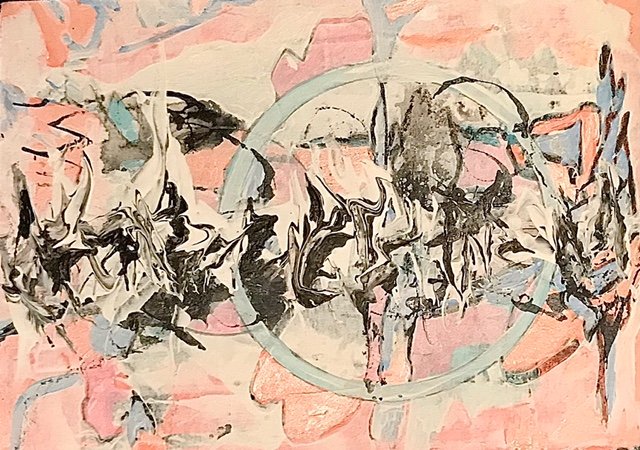
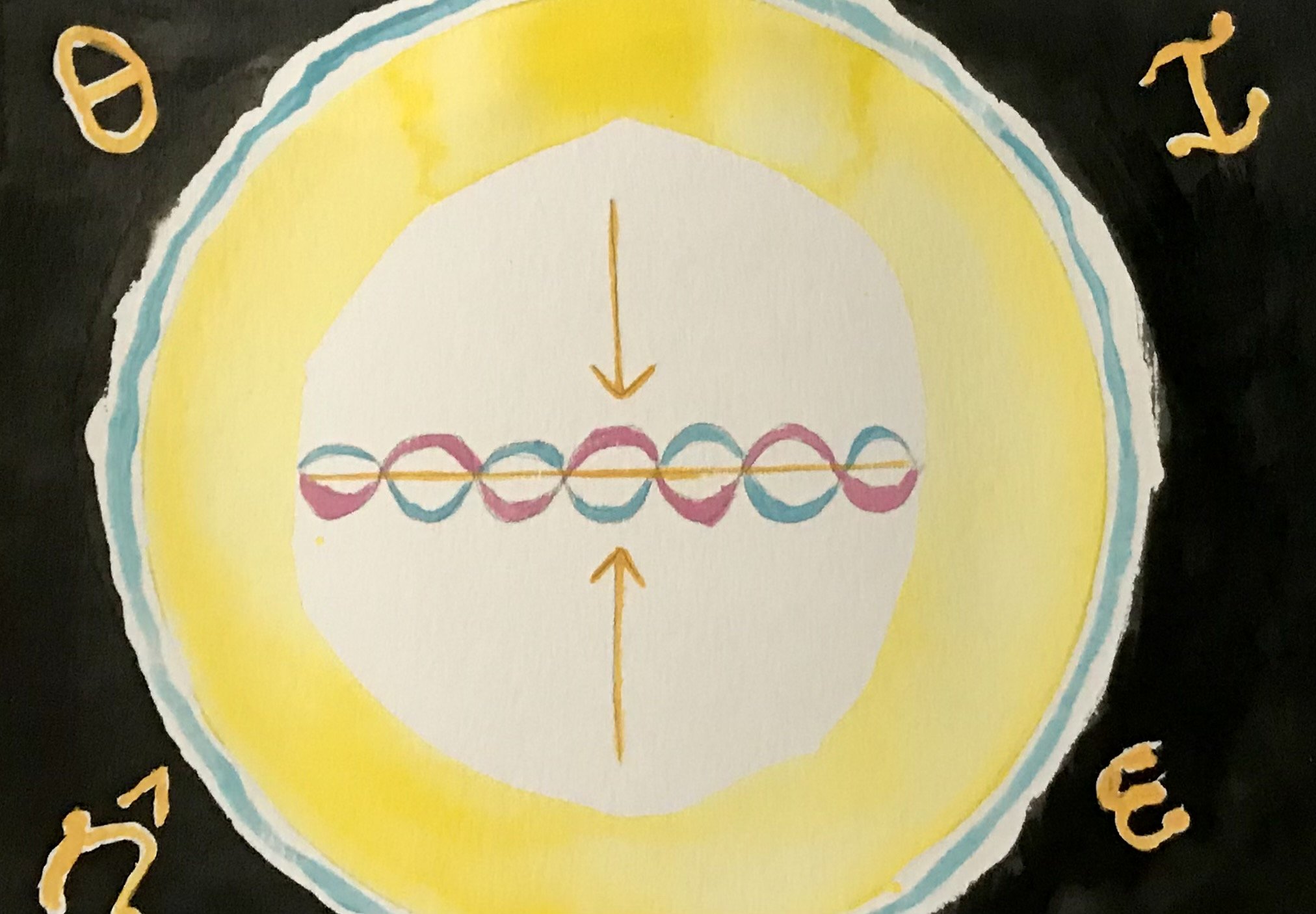
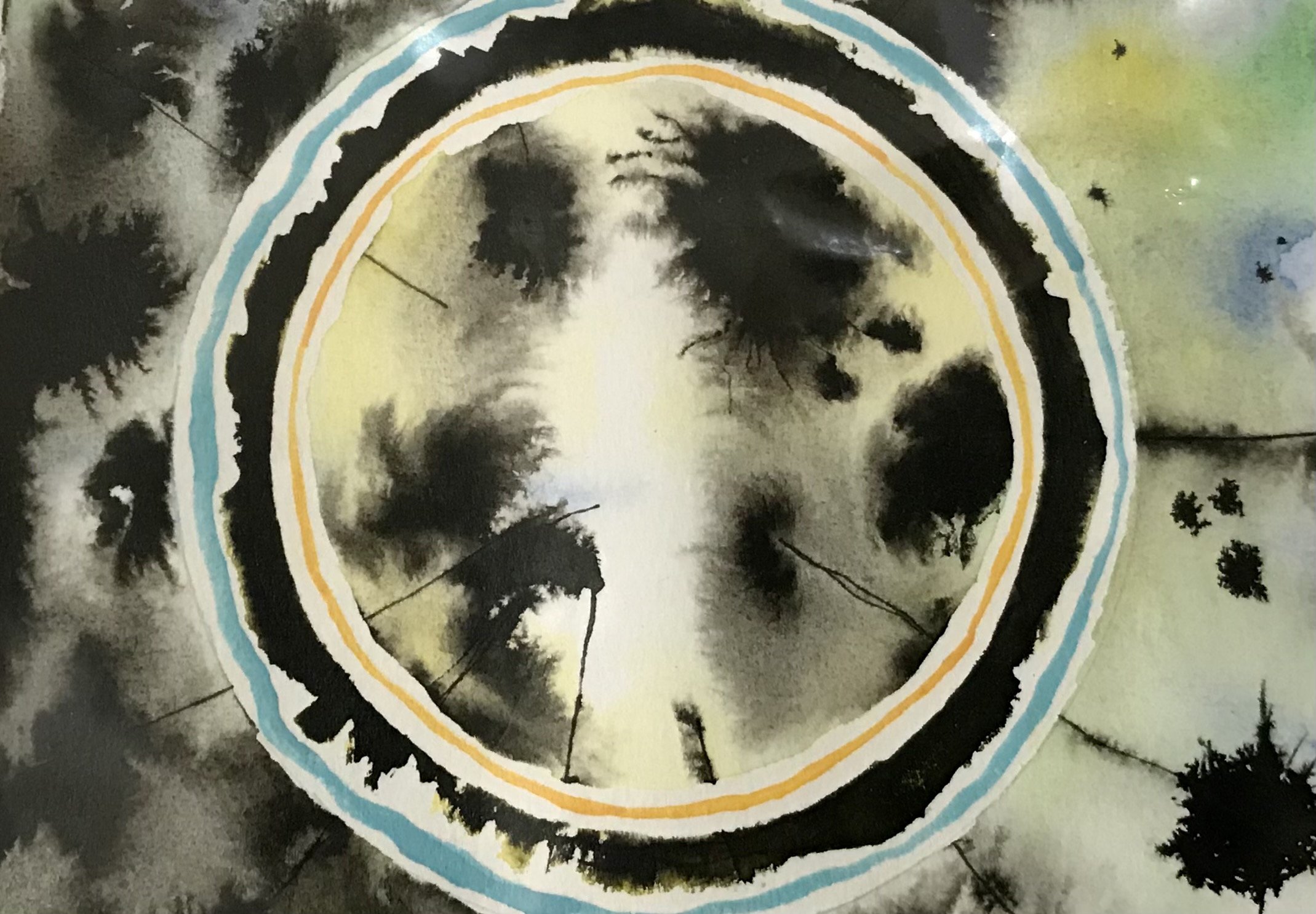
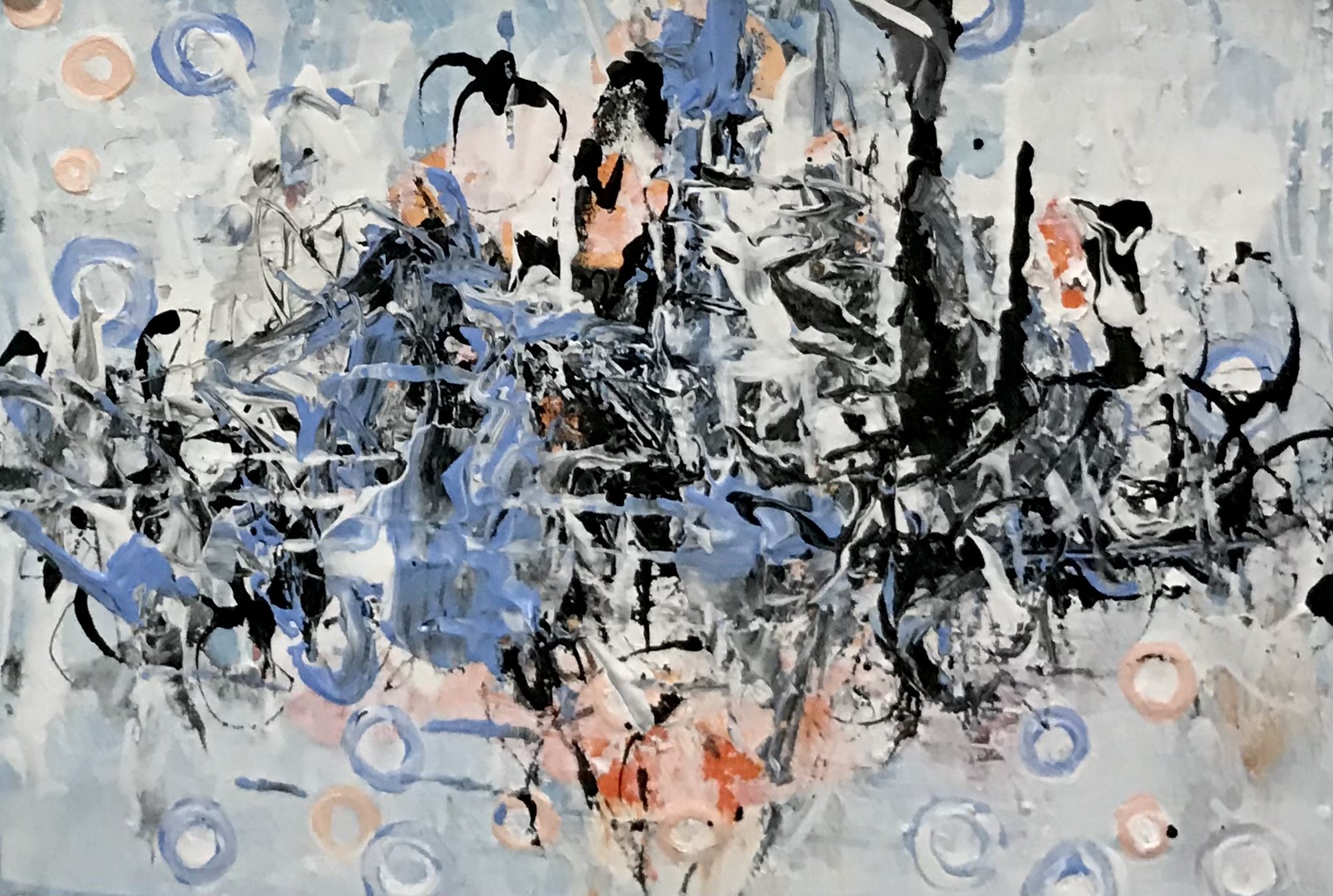
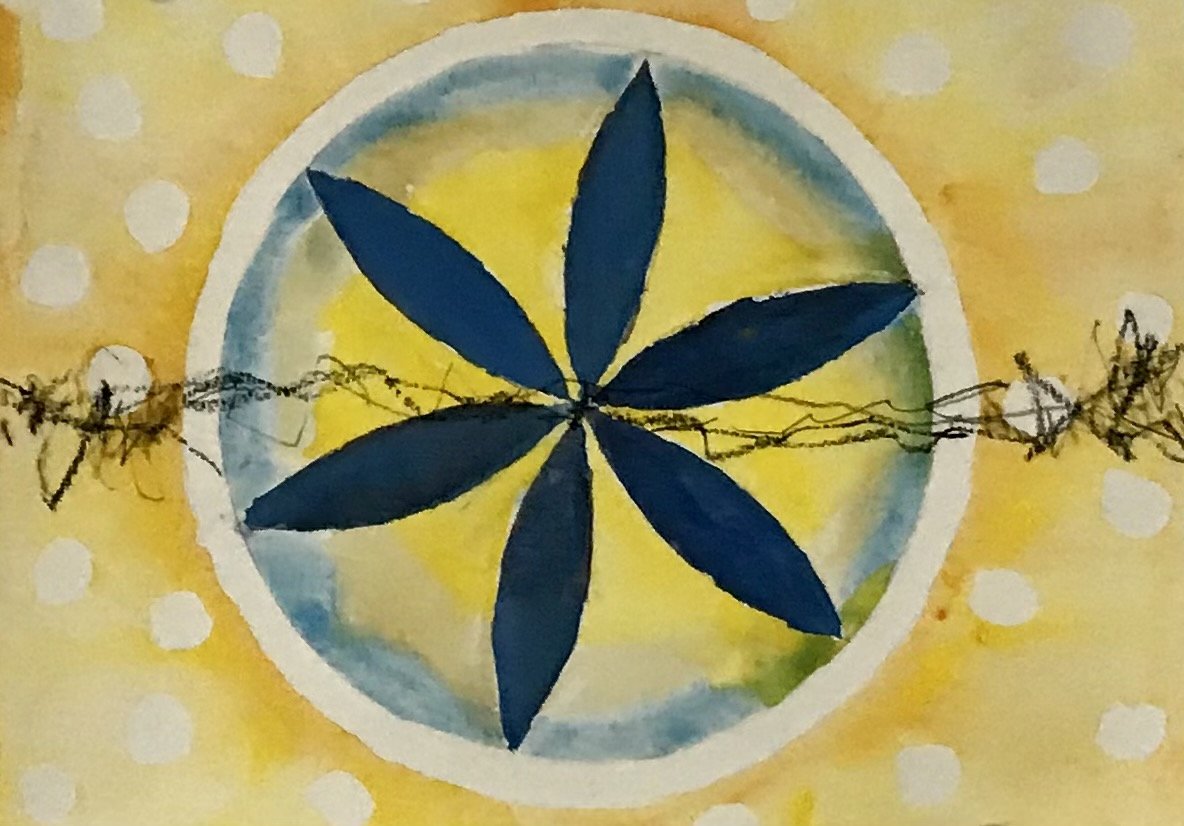
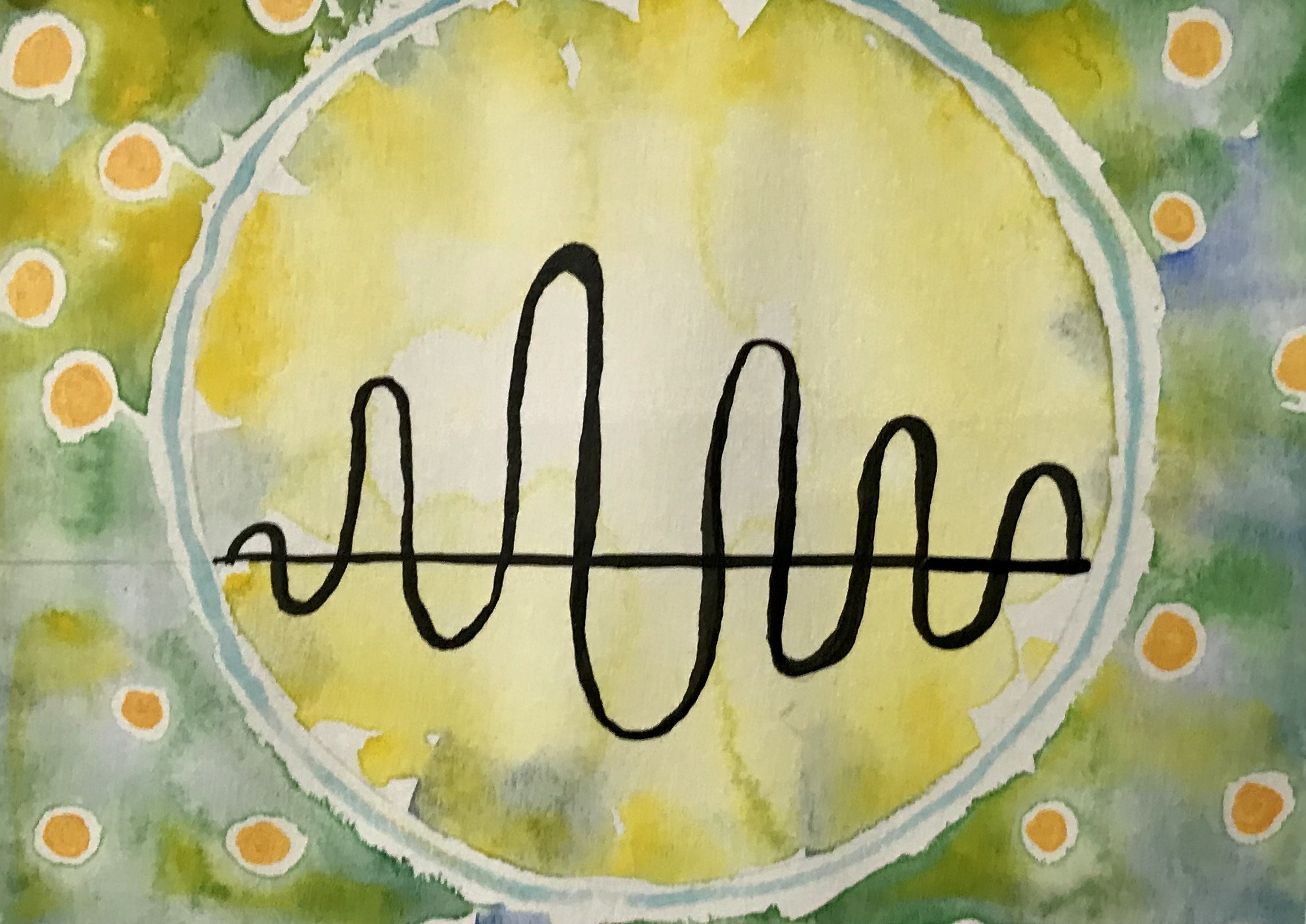

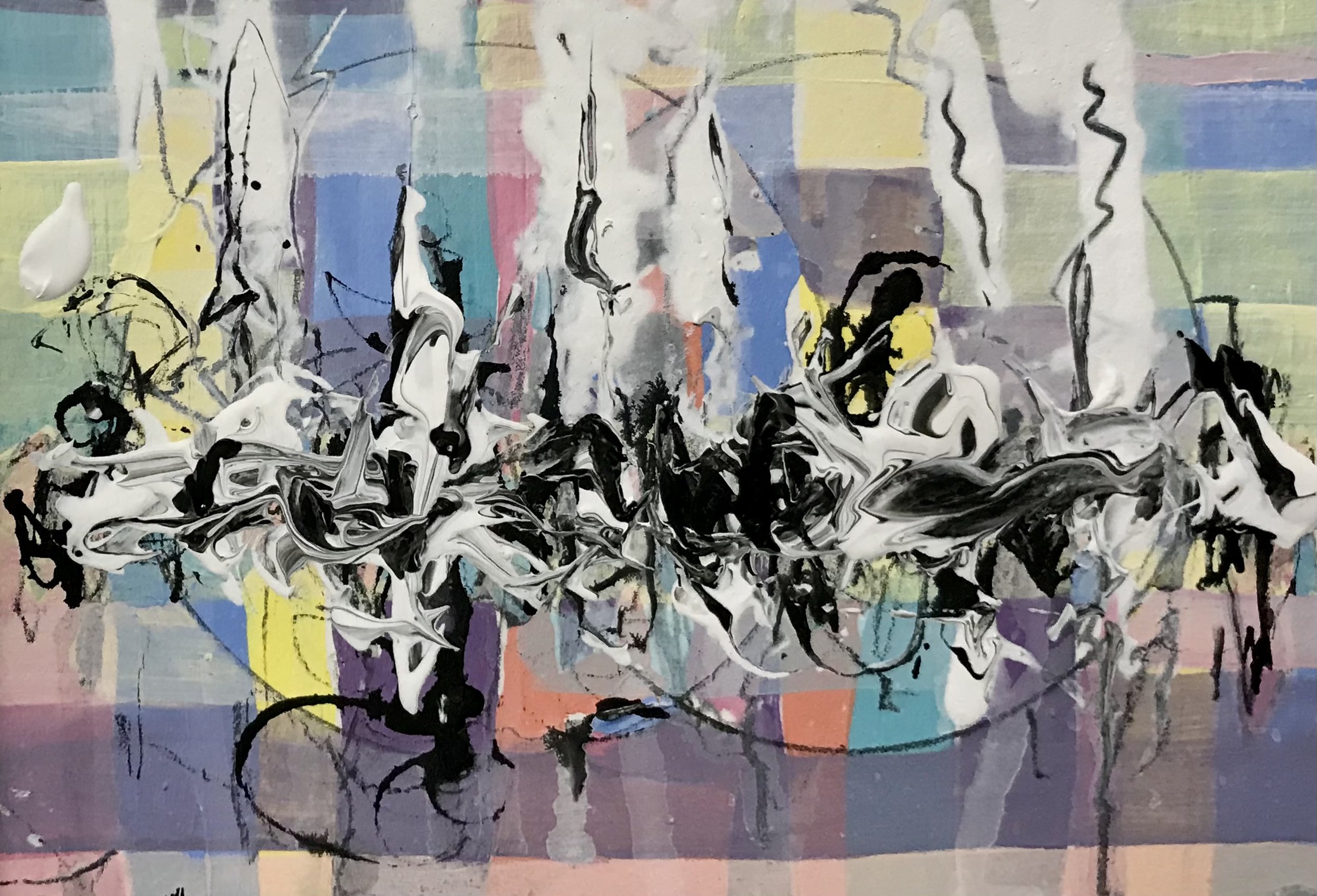
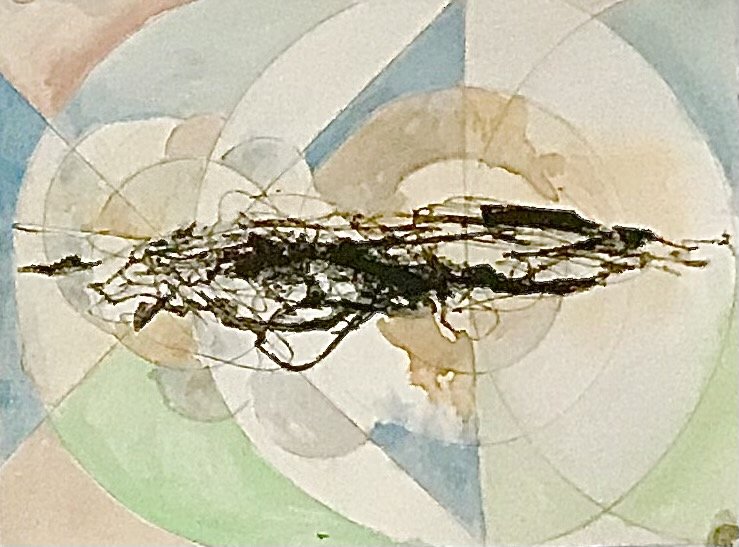
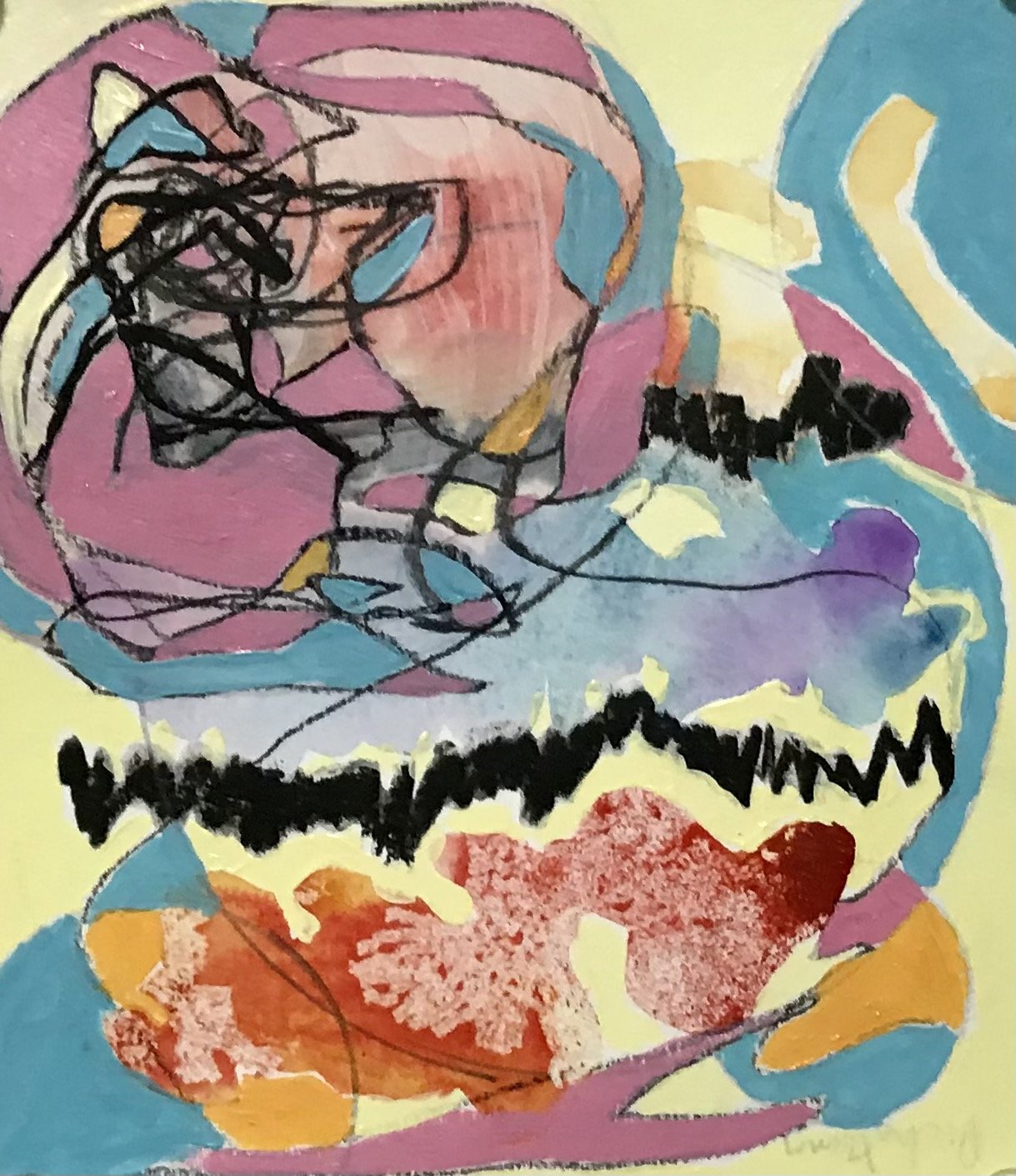
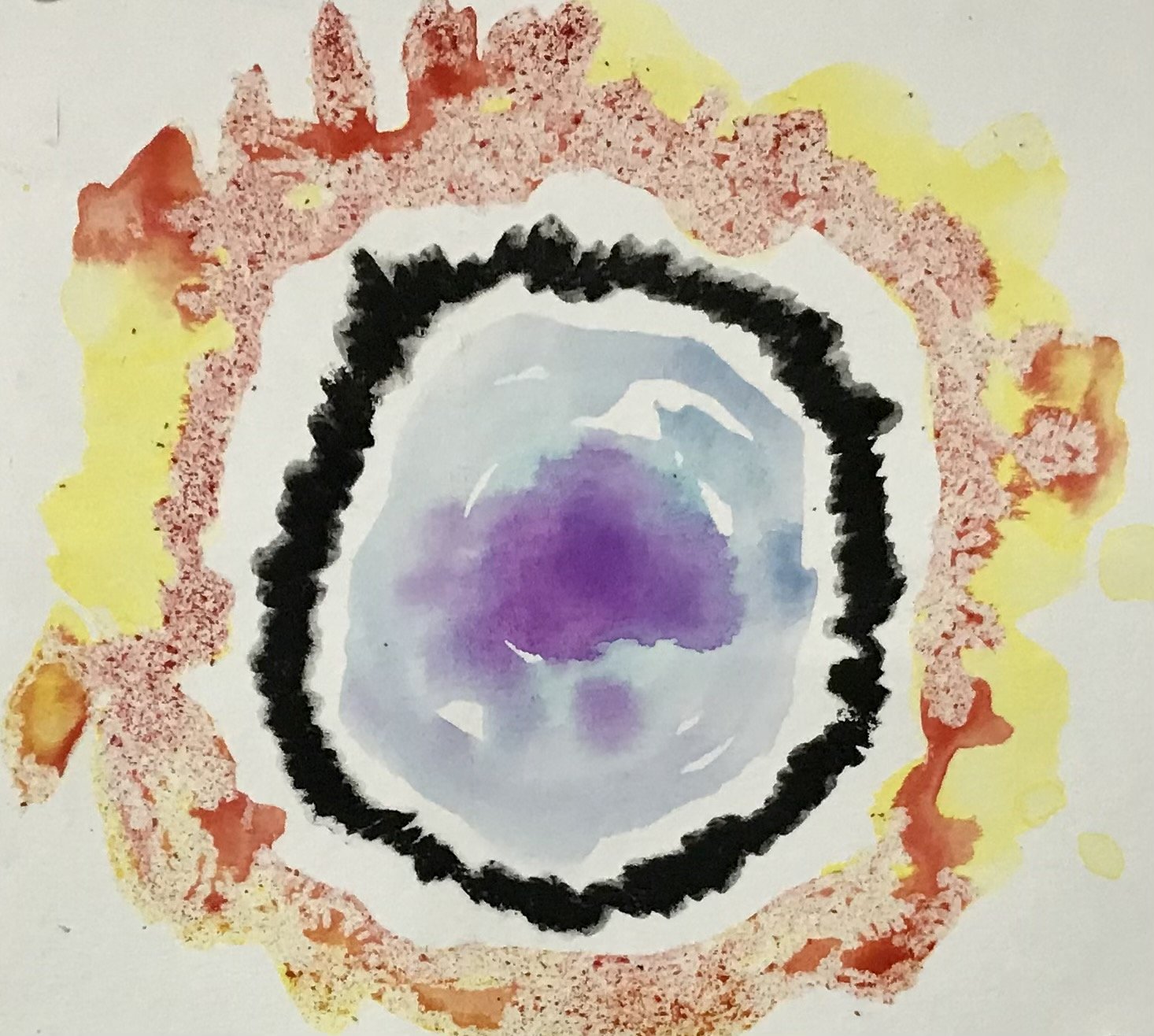
Mixed Media on Paper 20” x 28” (Performative works)
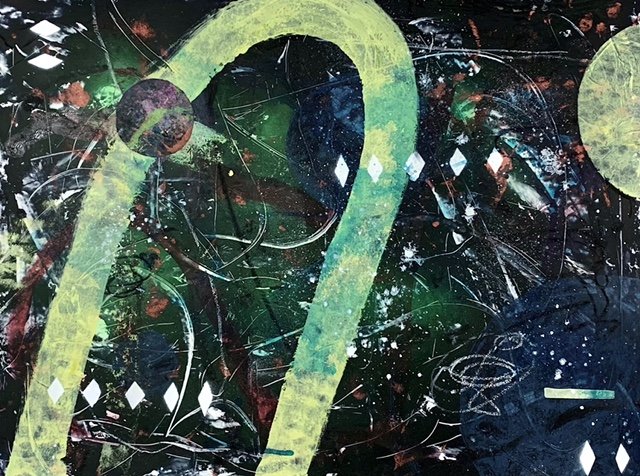
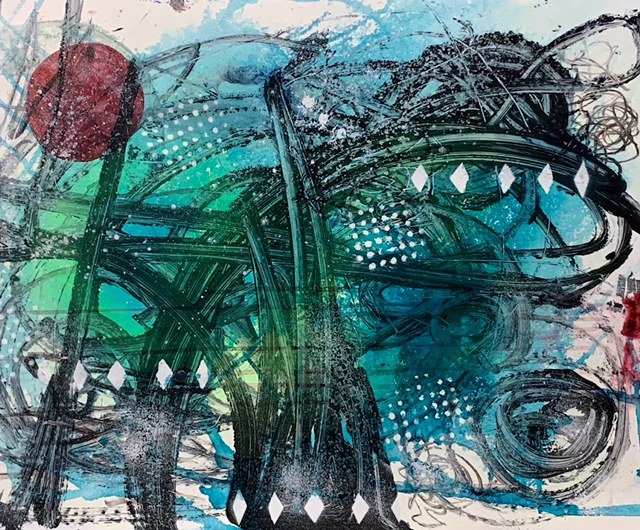


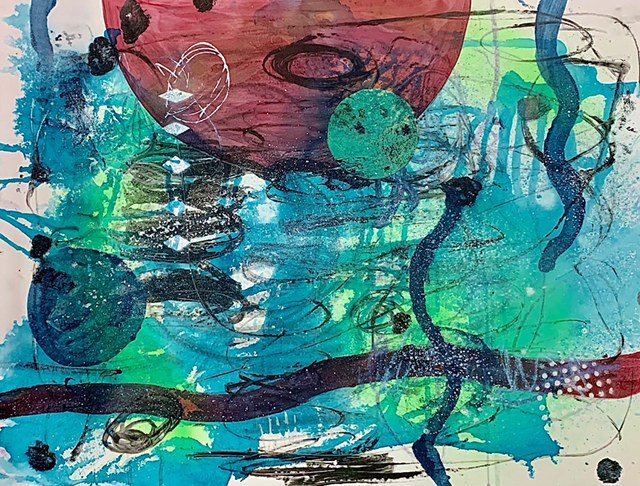
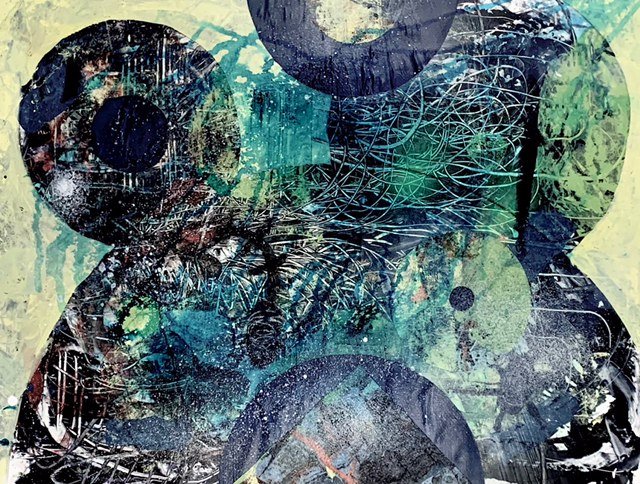
Mentors Matter: A Tribute to David J. Rowe
J.P. Draayer
Department of Physics and Astronomy, Louisiana State University, Baton Rouge, LA 70803 USA
Abstract. The role David Rowe played in advancing our understanding of nuclear structure has been pivotal to modernizing the theory into one that does not require the use of an effective charge concept, and one that is extensible across the chart of the nuclides. We briefly review how this flows from the early history of the field, focusing especially on David’s role in helping to bridge the divide between single-particle models and collective models of nuclear structure, and how this has led to the development of a beautiful and bold algebraic framework that underpins a theory of choice for future nuclear structure studies. Looking forward, David Rowe’s work also underpins current follow-on efforts focused on paving the way for the construction of yet another bridge, one that should help to span the chasm between low-energy and high-energy nuclear physics. If successful, the latter could ultimately lead to a truly ab initio framework for gaining a far broader understand- ing of nuclear structure, one that tracks forward from the fundamental structure of hadrons, especially protons and neutrons, and how they in turn conspire to give us atomic nuclei that in reality are the building blocks of the universe in which we live.
Click here to read full paper
From my father’s website:
The application of modern mathematical methods to the solution of physical problems is fascinating and rewarding. Thus, while the major thrust of my research program is the development of physical theory, I also engage in the development of mathematical methods as they apply to nuclear and other subfields of physics.
The physical problems that intrigue me concern the ways in which the particles of many-body quantum systems interact to produce a variety of highly correlated collective phenomena. I am particularly concerned with developing a microscopic theory of the collective dynamics that take place in nuclear vibrations and rotations and with understanding the nature of the phase transitions that take place with variation of a control parameter.
The atomic nucleus can be viewed as a fluid of nuclear matter, as a gas of interacting neutrons and protons or, at the subnuclear level, as a system of quarks and gluons. Thus, as in other areas of physics, one seeks hierarchies of models and, for a complete understanding, one needs to know how each model relates to the next more microscopic model. By such means one learns how interesting physical phenomena emerge from the interactions and correlated dynamics of its elementary constituents.
My students, colleagues, and I have shown, for example, that the properties of a powerful hydrodynamic model of the nucleus, which exhibits vibrational and rotational dynamics with a variety of possible quantum fluid flows, can be embedded in many-nucleon quantum mechanics. The model can then be derived using the mathematical techniques of analysis by changing the neutron and proton variables to collective and intrinsic variables. It can be understood in geometrical terms, by factoring the multi-dimensional many-nucleon space into products of collective and intrinsic submanifolds, and also by algebraic methods that focus on the symmetries of the model and the expression of its algebra of observables in terms of many-nucleon observables.
It is clear that the above strategy for research has far-reaching applications to many areas of physics that have yet to be explored.
Dr. David J Rowe
__________________________________
from CAP (Canadian Association of Physicists)
David Rowe, distinguished UofT theoretical physicist, CAP and Rutherford medal winner, passed away 8 May 2020
May 21, 2020 Community News
David J. Rowe, Emeritus Professor of Physics at the University of Toronto, passed away from a brief and sudden illness on May 8th (unrelated to the current pandemic).
Professor Rowe pioneered (with his then graduate student George Rosensteel) the symplectic shell model, based on the Lie algebra sp(6,R), which anchors the microscopic description of collective rotational bands in nuclei.
To make practical calculations, Professor Rowe developed the vector-coherent- state theory of sp(6,R). He refined his approach and expanded it with his graduate students and with mathematician Prof. Joe Repka, also from the University of Toronto, making significant contributions to the applications of group theory in nuclear physics and other areas.
Post retirement he continued to work on representation theory and nuclear physics, publishing in 2010 “Fundamentals of nuclear models: foundational models” with his long-time friend and collaborator Prof. John Wood of Georgia Tech. Prof. Rowe remained active in research, and kept writing until his passing, authoring by himself or in collaboration journal articles and reviews, all written in the clear and insightful style common to all his 260 or so research papers.
David Rowe was elected a Fellow of the Royal Society of Canada in 1986. For his contribution to theoretical physics in Canada, he received the CAP/CRM Medal in 1999. Amongst other honors, he also received a Sloan Fellowship, and the Rutherford Memorial Medal of the Royal Society of Canada. David Rowe also served for 3 years as Chair of the IUPAP Commission for Mathematical Physics and was a regular plenary speaker at topical conferences.
Hubert de Guise
Lakehead University

